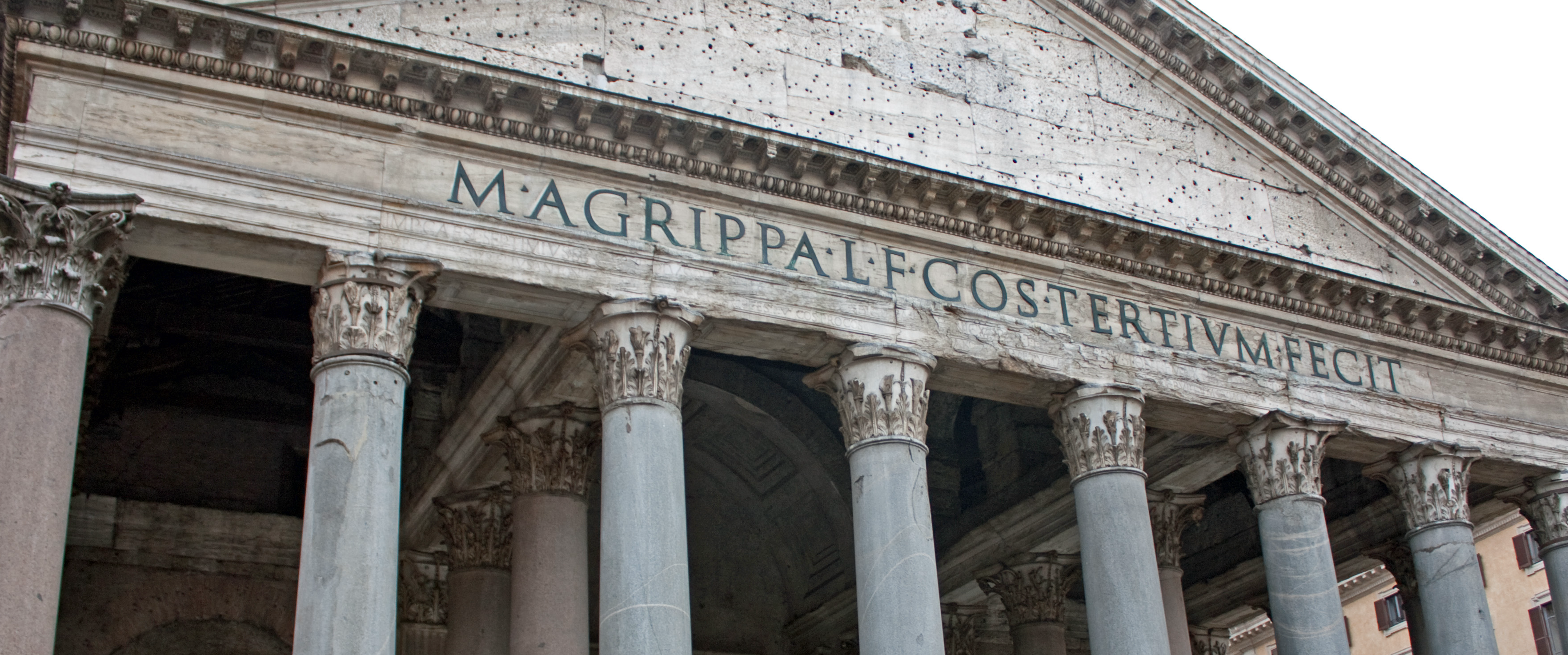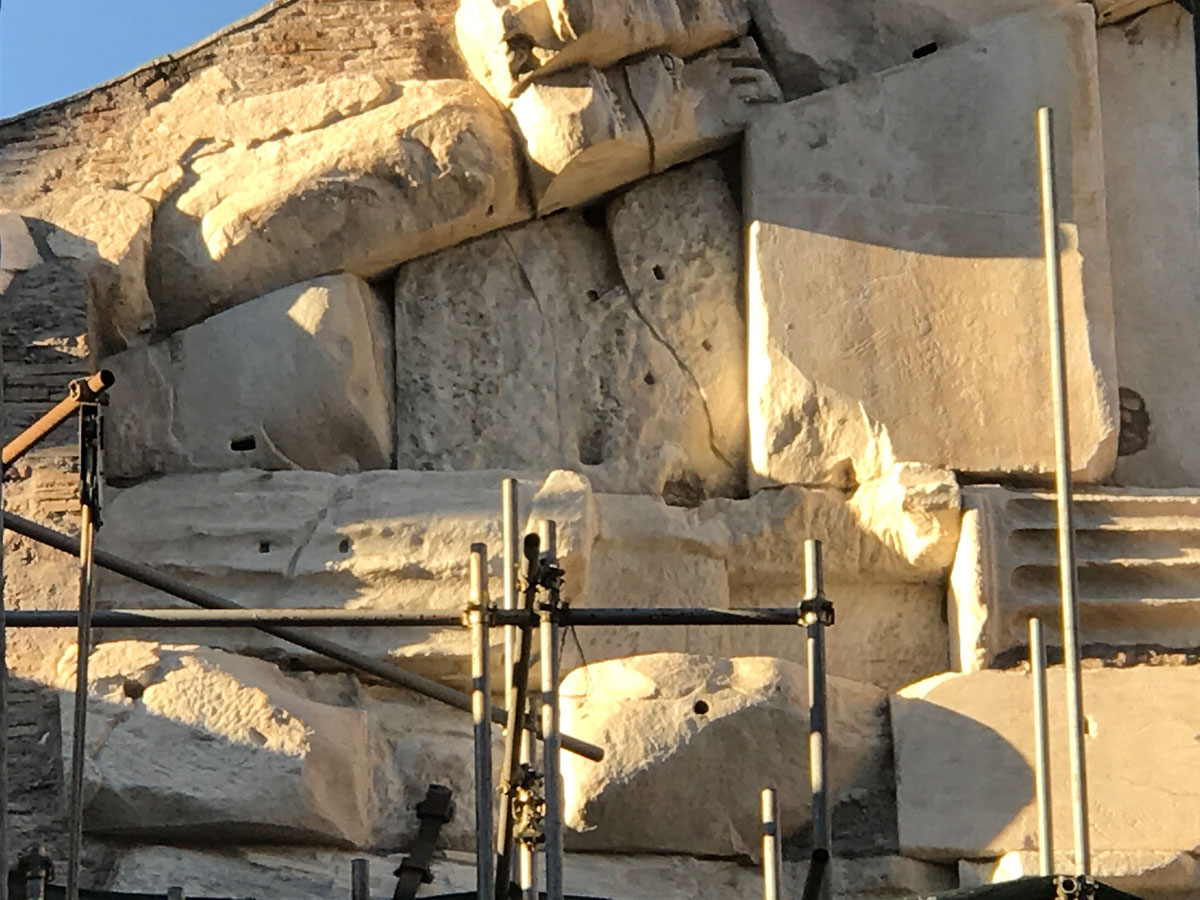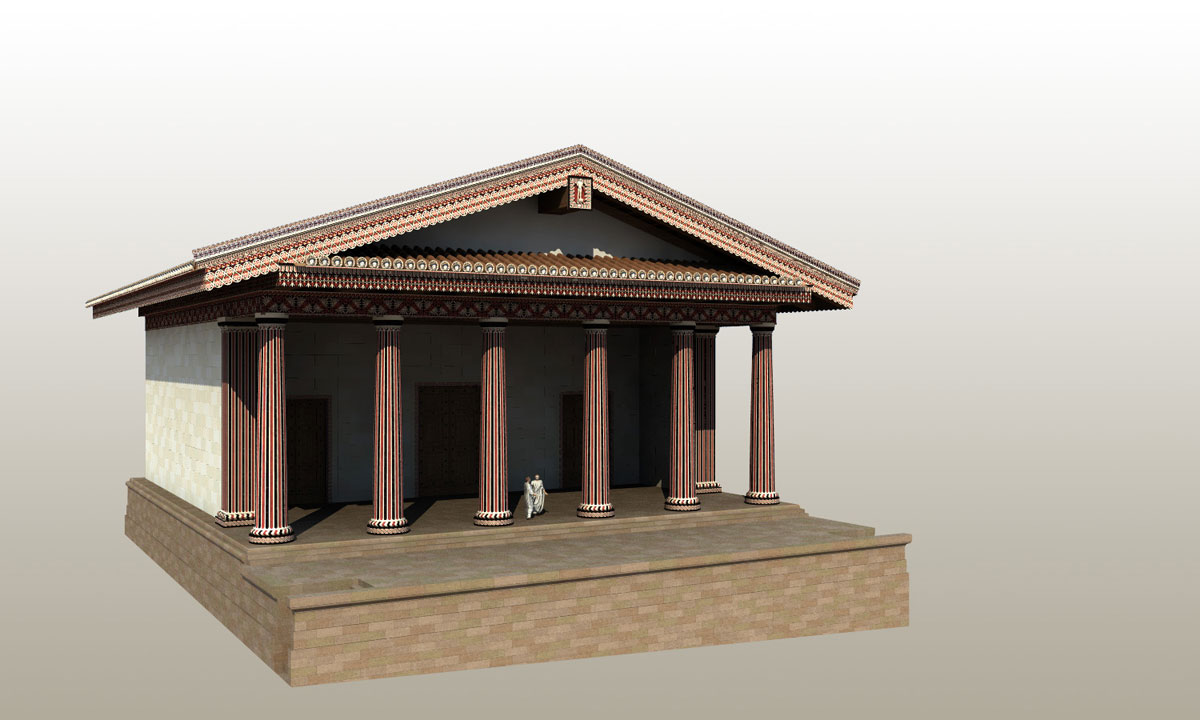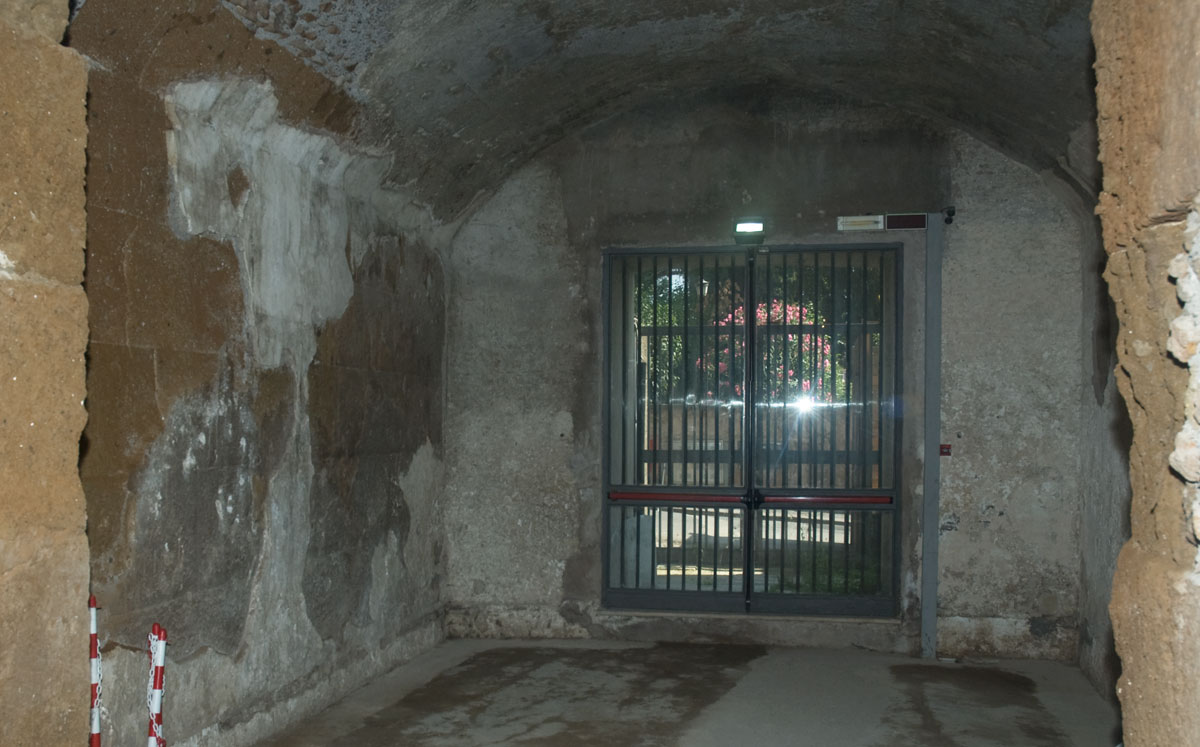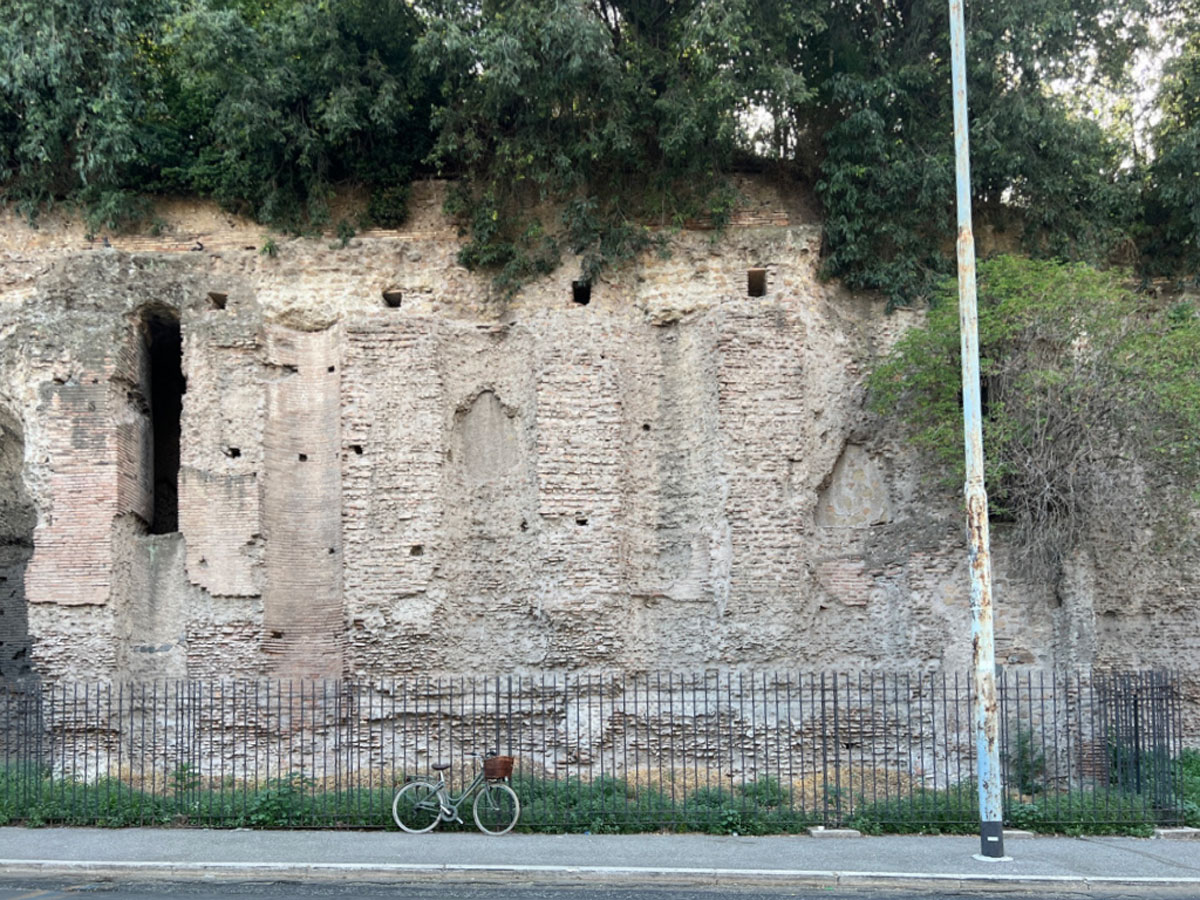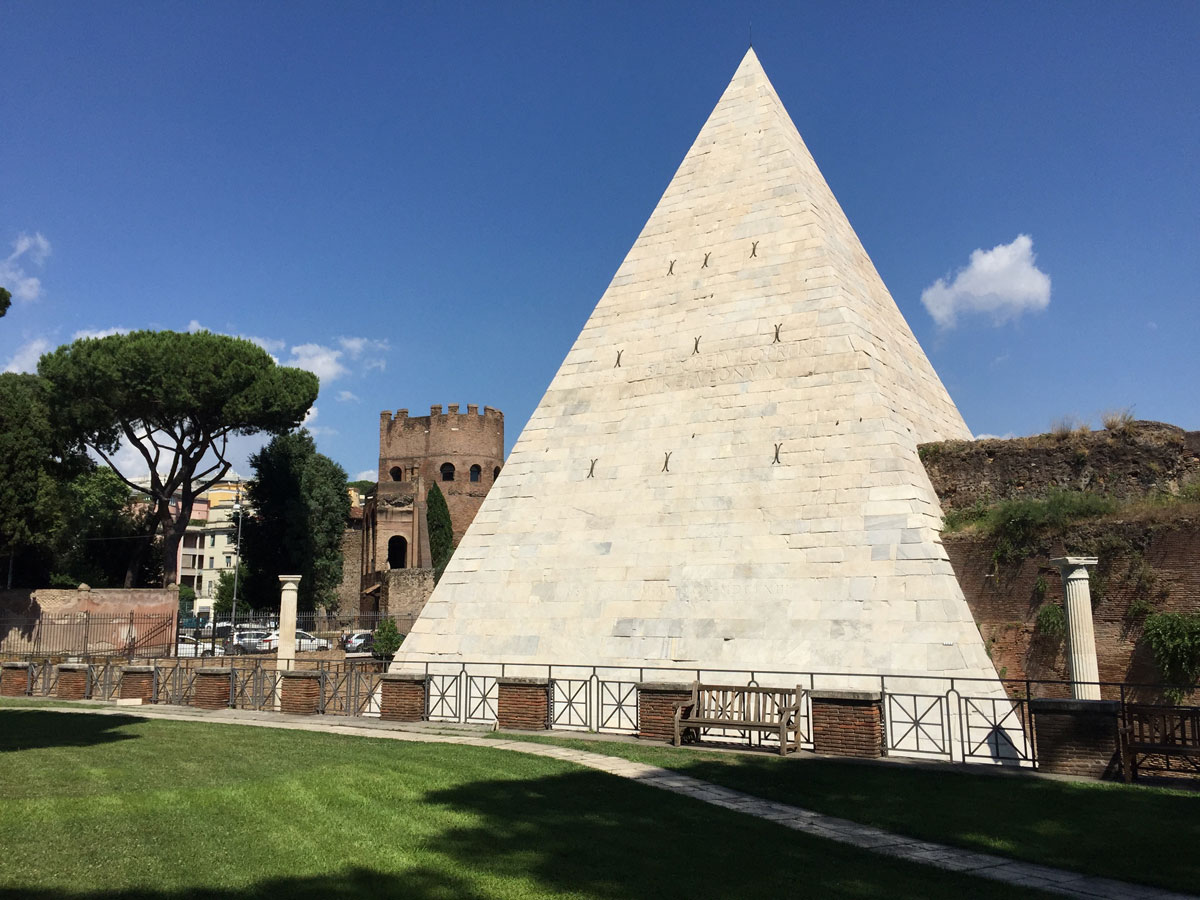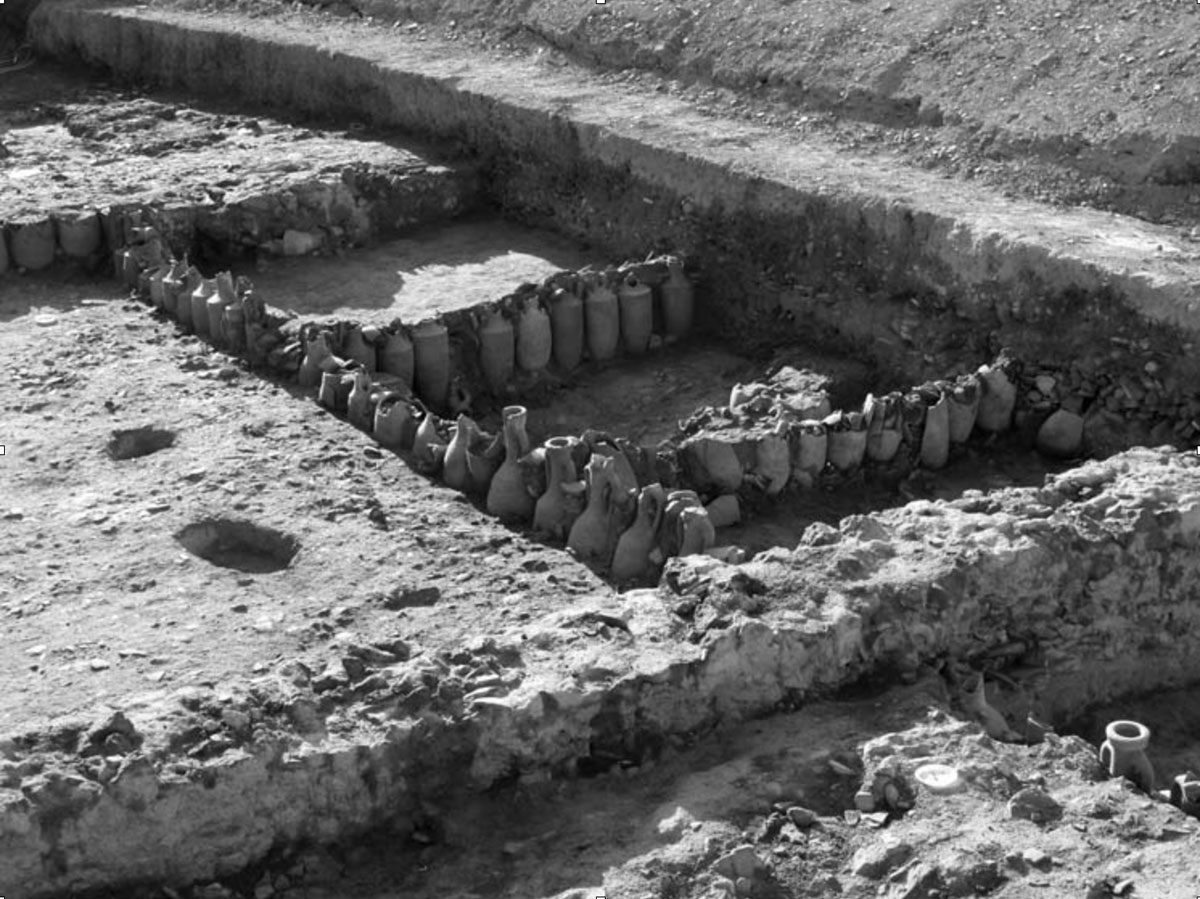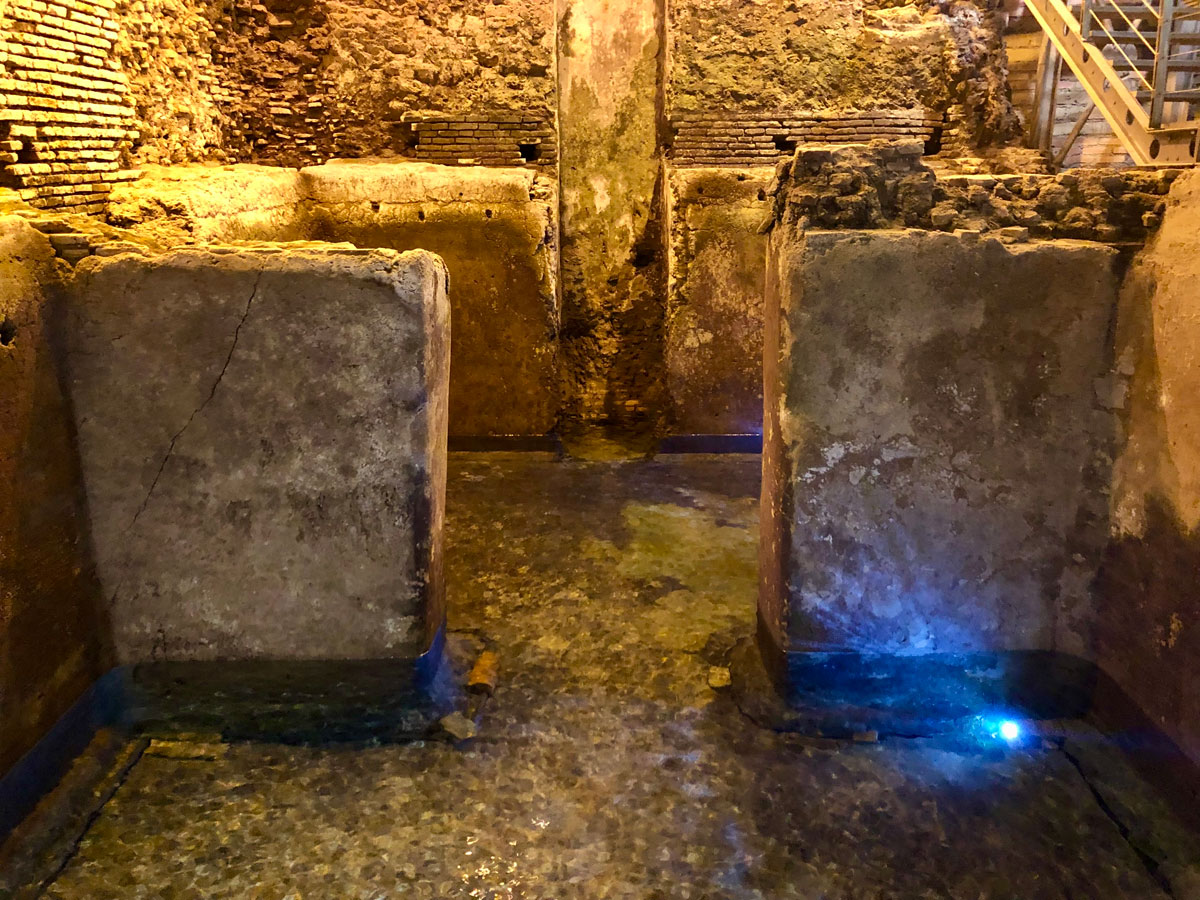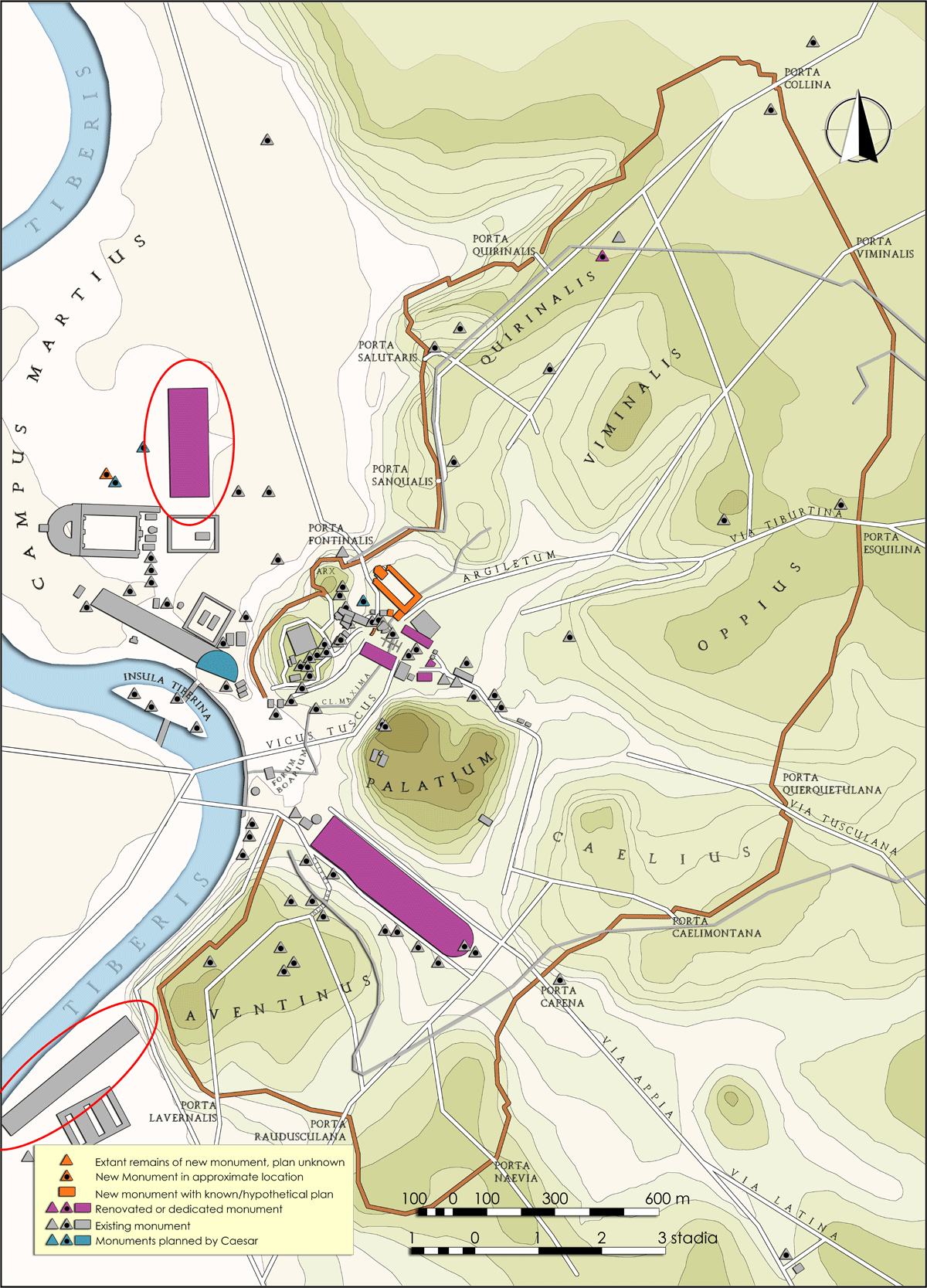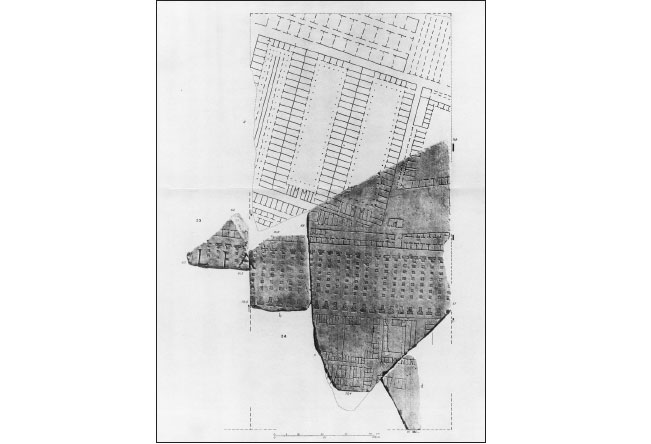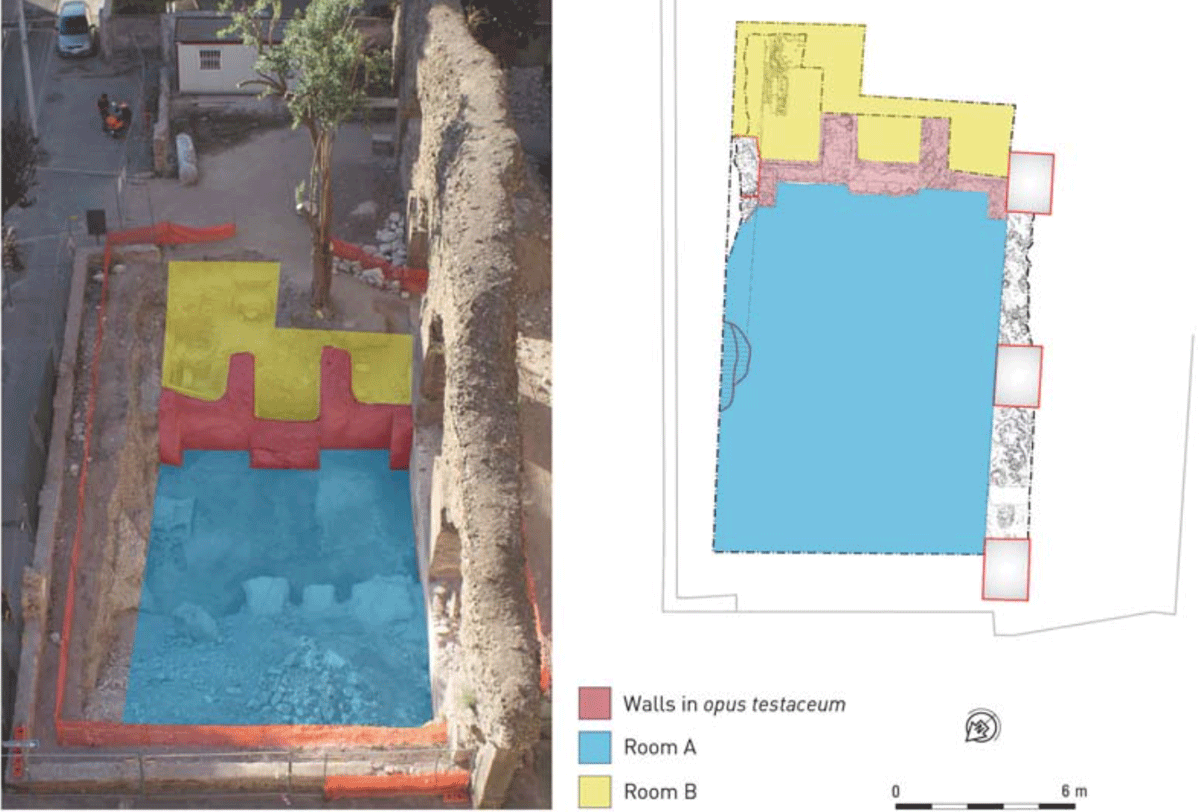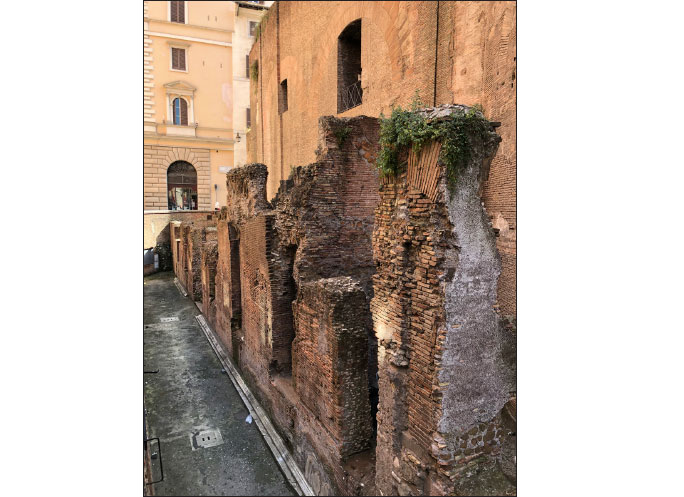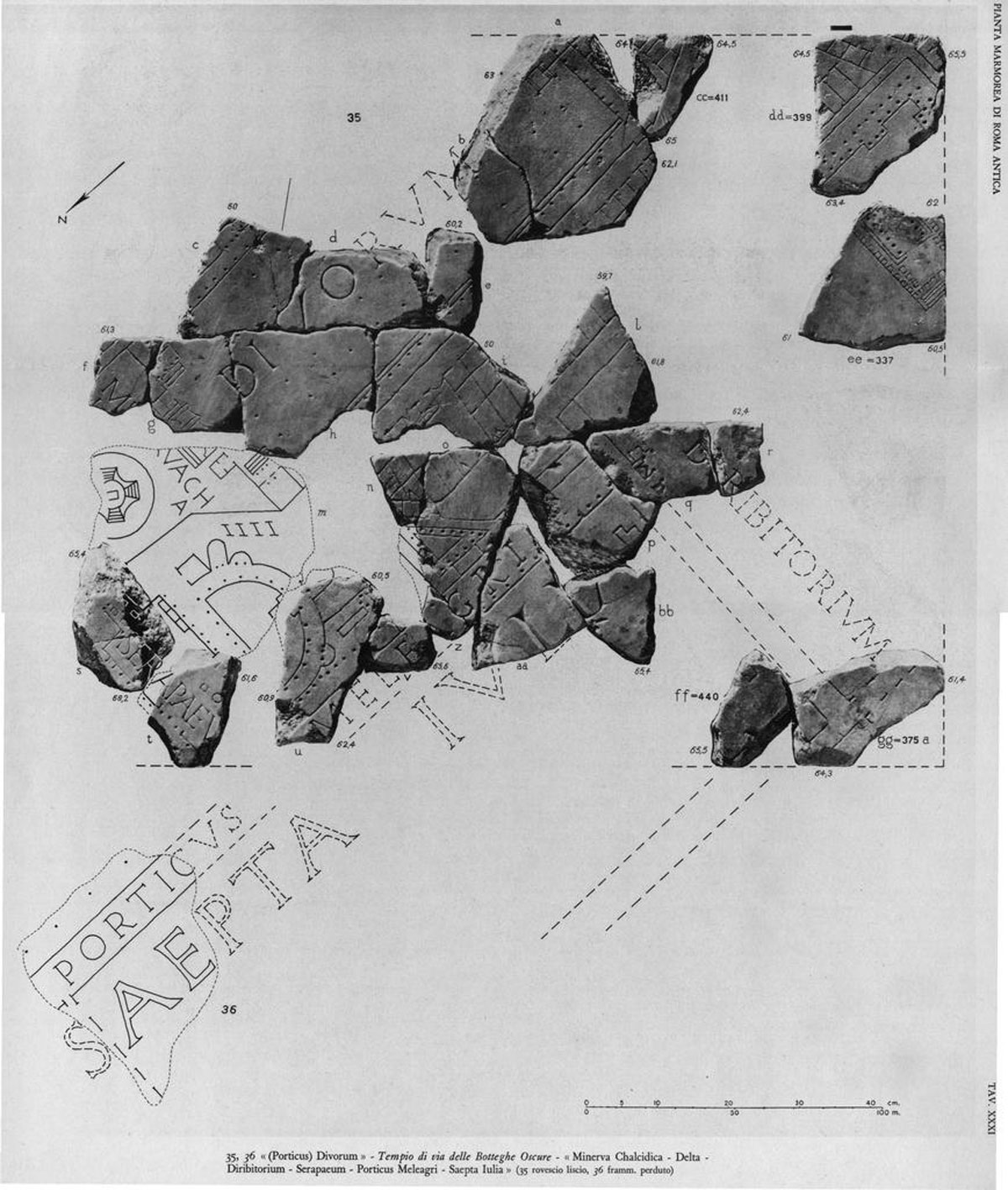Introduction
First coined in 1973, the term ‘adaptive reuse’ denotes the conversion of an un(der)used building into one that serves a new purpose. If a building has a natural lifespan, from construction to decay or demolition, adaptive reuse offers reincarnation, a second life in the service of a new function (Wong 2016). Practiced to differing degrees, it ranges from repurposing building materials at one extreme to transforming entire buildings at the other. For the latter, the most common choice is an intact building, convertible inside and out; a recent example might be the medieval Castelvecchio in Verona, which was adapted into a museum by Italian architect Carlo Scarpa in 1959–1973. When only the shell survives, the interior can still be repurposed, often (as in office or shop retrofits) with lightweight structural interventions. When engaged in such a transformation, an architect has somehow to address the building’s essential quality or characteristic features. Options include suppressing them in the service of its new image (inserting floors into a church for condominiums, for instance), acknowledging and emphasizing them by retaining traces of a past life (evidence of wall’s removal, for instance, or bullet marks and patches of destroyed plaster), or even reanimating previous use: a thirteenth-century Dominican church in Maastricht, Netherlands, was converted into the Selexyz bookstore with a wine bar at the altar, in ironic reference to the Eucharist (Wong 2016). Through these ‘ghosts,’ as Liliane Wong (2016) describes them, a successful host building becomes a visible palimpsest, its past co-existing with its present, reflected without being imitated.
A building’s capacity to host new life depends on physical factors (e.g. condition, size, siting, and load-bearing potential), but also on associations. Intentionally or not, intangible traces of past use, memories absorbed and retained, can impress themselves so indelibly upon a structure as to affect implementation of a new use, in positive, neutral or negative ways. Traumas, for instance, transcend time and transformation, and places where they occurred might be ‘repackaged with benevolence.’ This kind of repackaging happened at the Charles St. Jail in Boston, when it became the boutique Liberty Hotel, or at São Paulo’s Carandiru Penitentiary, which was replaced by the Parque da Juventude after a prisoner massacre by military police in 1992. Still, the potential for reuse of places of trauma as anything but redemptive sites of remembrance can be limited (as with internment camps at Auschwitz) (Wong 2016).
Practiced meaningfully, adaptive reuse constitutes more than a simple change of function; it recognizes and sustains a building’s original essence or soul (Wong 2016: 63–64). It is, as Markus Berger, Heinrich Hermann, and Liliane Wong (2009) describe it, a rich and varied process, which perpetuates cultural phenomena, draws connections over space and time, preserves memory, and makes for a rich urban tapestry. In Juhani Pallasmaa’s (2012: 37) words,
‘A[n …] atmospheric ‘weakening’ of formal architectural logic takes place in the reuse and renovation of buildings. The insertion of new functional, aesthetic, and symbolic structures short-circuits the initial architectural logic of the building and opens up unexpected emotional and expressive ranges of experience. Architectural settings that layer contradictory ingredients project a special sensory richness and empathetic charm. Often, the most enjoyable museum, office, or residential space is that which has been installed in an adapted existing building.’
The adaptive reuse of Roman buildings in post-antique times is commonplace. It accounts for the preservation of some of Rome’s most iconic structures: Trajan’s Pantheon, for instance, was converted into the church of Sta. Maria ad Martyres in AD 609; the so-called Tabularium on the Capitoline of 78 BC was reused as a medieval fortress, as the Palazzo Senatorio, for storing and selling salt (fourteenth to seventeenth century AD), as a prison (until the mid-nineteenth century AD) and as the Galleria Congiunzione between the Capitoline Museum’s two wings (1930s). This type of adaptive reuse, resulting from significant cultural (and often religious) change, is copiously documented. Still unexplored is the adaptive reuse of Roman buildings during antiquity. After assessing challenges in discerning it, this article explores factors that militate for and against adaptive reuse of public buildings (acknowledging that adaptive reuse of private buildings may have been considerably more common, as seen, for instance, on the Caelian Hill, where an apartment block of the third century AD was transformed into a luxury residence at the end of the third and beginning of the fourth century AD (Englen et al. 2014)). These factors range from a tendency to recycle, and urbanistic and design matters, on the one hand, to issues of technology, sustainability, and cultural heritage on the other. After considering variants of adaptive reuse (supplementary uses, adaptive architecture), the article focuses on two instances of adaptive reuse: the Navalia or shipsheds, which were transformed into a warehouse, and the Saepta or voting enclosure, which became an entertainment venue and then a high-end market. It argues that adaptive reuse could offer distinct advantages over new construction, rooted precisely in the palimpsests that resulted from that reuse.
Adaptive Reuse in Ancient Rome: Materials
Romans were no strangers to the concept of reuse, at least with regard to building materials. They expropriated materials from foreign cities: M. Fulvius Flaccus, for instance, pillaged marble roof tiles from the Temple of Juno in Croton for his Temple of Fortuna Equestris in 179 BC (earning a sharp rebuke from the Senate: Livy 42.3.10–11; Davies 2017a: 93–94), and, in the 80s BC, P. Cornelius Sulla brought columns from the Athenian Temple of Zeus Olympius to Rome, and redeployed them on the Capitoline (Pliny, Naturalis historia 36.45; Tölle-Kastenbein 1994: 145, 152; Davies 2017a: 199–205). The Mahdia shipwreck off the Tunisian coast bears witness to this practice: its cargo included about 70 marble columns, capitals, and other architectural elements, possibly looted from Athens and en route to Italy in c. 80–70 BC (Hellenkemper Salies et al. 1994; Miles 2008: 209–210).
Recycling materials was also standard practice in the building trade from at least archaic times (Peña 2020). An unsystematic disposition of stone blocks in the fourth century BC city walls probably resulted from reuse (Bernard 2018: 120–121). By 54 BC, when Cicero (ad Atticum 4.17) noted that L. Aemilius Paullus Lepidus ‘[used] the same columns as were in the ancient building’ to restore the Basilica Aemilia, recyclable materials were systematically removed from buildings designated for remodelling or demolition. A guild of demolition experts (Corpus Inscriptionum Latinarum VI, 940) presumably supplied these materials to contractors. For imperial times archaeological evidence is copious: marble flooring and revetment were systematically stripped out of the ‘House of Augustus’ on the Palatine before construction of the Temple of Apollo Palatinus, from the Domus Transitoria nymphaeum after the fire of AD 64, and from the Esquiline Wing of Nero’s Domus Aurea before their incorporation into the foundation for Trajan’s Baths after AD 104 (Ball 2003: 229–230; Barker 2012: 22–25). Building stone was also recycled as aggregate in concrete (Barker 2012: 24; Jackson and Kosso 2013). In turn, structures such as Julia Domna’s restored Porticus of Octavia of AD 203 preserve incorporated salvage (Figure 1; Viscogliosi 1999; Gorrie 2007).
The chief motivation for salvaging and reuse was economic, as it often is today (Wong 2016: 33). The cost and labour required to quarry, transport, and work marble sustained its value and made its discarding unlikely if reemployment was an option. In fact, estimates of the manpower necessary to salvage marble veneer suggests it was roughly five times less laborious to source than new panels; and judging by nineteenth-century building manuals, those with the skills and contacts to deal in used building materials could make a handsome profit (Barker 2012: 22). So lucrative was business that from late Republican times the law prohibited the purchase of houses in Italy if the sole purpose was to demolish them for salvage (Codex Iustinianus VIII.10.2, 6–7; Scriptores Historiae Augustae, Hadrianus 18). But fabric reuse could also serve ideological purposes. This was probably the case with the Arch of Constantine of AD 315, which incorporates building and sculptural materials from earlier monuments, expropriated in the service of legitimation (e.g. Kinney 2012). The practice was in place long before: when, around the mid-second century BC, the Temple of Castor in the Forum was overhauled and its tetrastyle façade exchanged for a hexastyle front with a tribunal, its early fifth-century terracotta revetments seem to have been reused (Figure 2; Nielsen and Poulsen 1992: 50, 80–86, 170). The resulting Italic appearance was a startling departure from contemporaneous temples with their Hellenising characteristics (marble superstructures, peripteral colonnades) and, at a time of tribunician and popular activism, reasserted archaic traditions and senatorial control drawn from access to the gods (Davies 2017a: 102–104).
Yet, if recycling of materials in ancient Rome is amply documented, adaptive reuse of entire buildings is not. This is not surprising: it is not an easy phenomenon to track. Hard to discern in the archaeological record, particularly when a building’s superstructure is poorly preserved, it is equally hard to perceive in literary sources if the retention of a building’s name obscures functional shift, or a change of name suggests two different structures rather than a single reused building. In rare cases where a building is known to have been vacated of its original purpose, it is not necessarily clear what (if any) new use it may have gone on to serve. Livy (6.20.13) places the early mint, for instance, on the Arx (in a row of rooms on the north side of the substructio, perhaps, or in a lost building on top of it), but what happened to the empty building when the mint was relocated south of the Colosseum in the Domitianic period (Serafini 1943–1945; Coarelli 1994; Serafin 2001) remains unknown (Figure 3). Even when new use is documented, it can be hard to determine whether it superseded a previous function or merely complemented it.
Adaptive Reuse in Ancient Rome: Buildings
In principle, a number of factors militated in favour of adaptive reuse. As in many pre-industrial societies, Romans were loath to throw things away: sources attest to papyrus and amphora recycling, as well as sales of used goods and antiques at auction and in second-hand markets. They were also accustomed to reworking things, restoring murals and mosaics rather than replacing them, even in luxury homes and palaces, retouching and adapting artworks for economic and ideological reasons, and refreshing inscriptions for clarity or to update a subject’s titles (Holleran 2012; Ng and Swetnam-Burland 2018: 8; Longfellow 2018: 26–30). In architecture, as Richard Jenkyns (2014) observes, they did not prize an ‘original’ form so much as development and modernization of urban landscapes. Diane Ng and Molly Swetnam-Burland (2018: 11) question whether Romans ever considered a statue, building or programmatic assemblage ‘finished’, or accepted adaptations as part of an evolving visual landscape, in which the past added valuable texture to the present.
There were also urbanistic and architectural factors: in a city glutted with architecture, where space was scarce, buildings were unlikely to be vacant for long (Ng and Swetnam-Burland 2018: 10), and legislation prohibited their unroofing or demolition unless it served immediate rebuilding (Phillips 1973; Siwicki 2020: 8–9). Design was favourable to reuse (nowadays architects consider rectilinear forms, which were prevalent in Rome, most versatile for transformation). So too was material: from the end of the second century BC, public architecture was heavily reliant on concrete, which was durable, nearly indestructible by fire or man, and all but devoid of value as recycled fabric (Mogetta 2021).
And yet, though temple honorands occasionally changed (e.g. the Temple of Elagabalus on the Palatine: Thébert 2001), reuse of public buildings for an altogether different function seems to have been relatively unusual. This sheds valuable light on aspects of Roman culture, especially when considered in regard to three principal drivers for adaptive reuse in present times. The first driver is technological advance. Over the course of the Republican and imperial periods, Rome never experienced a radical change of energy source or technology that rendered whole categories of building obsolete. Fire, and solar, water, wind, and animal (including human) power were the main energy sources. They drove machines used in construction, water-lifting, mining, agriculture and warfare, as well as entertainment and medicine (Wilson 2008; Wikander 2008). Looms served for manufacturing, as did watermills, which were also used for dough-mixing, sawing, pounding grain, and pressing olives. These machines grew more sophisticated, but there was no equivalent for the advent of the steam engine, which diminished the need for stables, or the advent of the combustion engine, which diminished the role of railway stations (e.g. the Paris railway station, now a museum: Wong 2016: 32–33). Nor was there a development comparable to the internet, which continues to shutter high-street shops throughout the West.
The second driver is sustainability, a term first popularised when the global oil crisis in the 1970s exposed the finite quality of the earth’s natural resources and the need for conservation (Wong 2016: 30). Roman views on sustainability emerge from their attitudes to wood, which they harvested throughout the Mediterranean in vast quantities, using it, inter alia, for agriculture, construction, shipbuilding, and as fuel for industry and heating (Varro, De re rustica 2.4.20; Plin. HN 16.62; Thommen 2012: 86). Romans recognised, it seems, that clear-cutting could lead to soil erosion, flooding, and forest fires. They implemented protective measures in places such as Macedonia and Lebanon; and they carried out re-afforestation and tree-planting to save valuable wood and land resources. Yet, based on the writings of Cato, Varro, and Columella, Lukas Thommen (2012: 71, 77, 86–87) argues that such countermeasures responded not so much to an urge to preserve resources as to a concern for profitability. And, when the likes of Livy and Statius criticise ecologically harmful activities, it is less out of concern for sustainability than it is to argue against luxury and excess, in tune with admonitions from philosophical circles (e.g. Sallust, Bellum Catilinae 13; Seneca, Epistulae 122.19; Thommen 2012: 78).
The third and final driver of adaptive reuse today is preservation of cultural heritage. The revival of interest in antiquity in the seventeenth and eighteenth century AD, coupled with monument destructions during the French Revolution in the late eighteenth century AD, inspired debate over cultural heritage and restoration (Wong 2016: 70–77, 80–84). By the early twentieth century AD, conservationists acknowledged that, if conservation is to provide for a building’s continued existence, it has to go beyond maintenance and repair. One option is to resurrect past structures as period museums, as in Plymouth, Massachusetts, where actors interpret the city’s role in colonial history (Wong 2016: 60–61). Another option is adaptive reuse, but, in ancient Rome, though reconstruction occurred for various reasons, the preservation of a building’s physical aspect because of its historic value inherent in its form and materials, in Christopher Siwicki’s view (2020), was not one of them. On the rare occasions when ancient authors refer to old buildings, it is usually to moralize or make a rhetorical point rather than to recognize historic value. There is no indication in Vitruvius’ work, or in any other source, of an ideological approach to restoration or the treatment of historic buildings more generally, and though the late Republican/early Augustan antiquarian Cincius may have written a guide to antiquities on the Capitol or even in the entire city, his work is lost (Siwicki 2020: 6–7). For its part, legislation banning demolition aimed at safeguarding housing (Phillips 1973), preventing speculation, and maintaining the appearance of city centres, not preserving cultural heritage (Siwicki 2020: 8–9). There is no equivalency, in other words, between Roman legislation and, for example, the U.S. Department of Housing and Urban Development’s Community Development Block Grant of 1974, which assigned funds for rehabilitation of residential and commercial structures to counteract urban renewal programs of the 1940s and 1950s that had authorized loans for slum clearance and redevelopment in the name of progress (Wong 2016: 124–125).
Additional factors that discouraged adaptive reuse resided in particularities of Roman urbanism and architecture. For instance, the city never grew so unwieldy as to necessitate systematic decentralization, which might have rendered obsolete certain types of building at the city’s core. Moreover, though there is little sign of zoning, Romans did have a strong sense of place, and, as Cicero (De finibus 5.1.2) makes clear, they connected sites and structures with events and individuals of the past. Collective memories were derived from places, which were then understood and treated accordingly (Vasaly 1993: 29–33; Edwards 1996: 27–43). As a result, places and buildings tended to retain their character and their function. By modern standards, moreover, Roman buildings were highly unspecialized. Temples sheltered cult statues, but also, inter alia, meetings of the Senate and/or consuls (Castor, Bellona, Concordia, and others), the treasury (Saturn), and archives (Nymphs). Most mid-Republican temples doubled as war memorials. Basilicas housed tribunals, diplomatic proceedings, commerce (Vitruvius, De architectura 5.1.4–5); the Circus Maximus was also a market. More specialized, bath buildings still came to incorporate a wide array of facilities such as lecture halls and temples. Built-in multifunctionality, in turn, helped forestall obsolescence.
Finally, if practiced extensively, adaptive reuse of entire structures might have diminished the building industry, which, as in any pre-industrial economy, was one of the single greatest concentrations of labour: by Janet DeLaine’s (2000) estimation, at the start of the third century AD, 15–24% of wage-earners worked in construction. Though mass employment was often a by-product of an emperor’s indulgentia rather than his aim (Bernard 2016: 85), innovations in construction techniques were rarely meant to replace human labour or reduce wages, even when they would have increased productivity. Suetonius (Divus Vespasianus 18) claims, in fact, that when ‘someone [offered] to convey some immense columns into the Capitol at a small expense by a mechanical contrivance, [Vespasian] rewarded him handsomely for his invention, but would not accept his service, saying, ‘Suffer me to find maintenance for the poor people’’.
The city of Rome, then, evolved through an accretion of new buildings rather than an adaptation of old ones. Taken together, the longevity of its buildings, a keen sense of place and meanings among its inhabitants, and the possible rarity of adaptive reuse, make it likely that, when a building was converted to a new purpose, Romans paid attention and retained a collective memory of previous uses. Ghosts are likely to have lingered.
Variations on a Theme: Supplementary Use and Adaptive Architecture
In some instances, buildings gained secondary uses with the passage of time. For example, after Claudius’ death in AD 54, his wife Agrippina sponsored a temple to Divus Claudius on the Caelian (Buzzetti 1993). When she died five years later, the temple was still unfinished, and Nero built a monumental nymphaeum on the north side of its vast platform (Figure 4). If he hoped to nullify the temple’s purpose as a slight to his predecessor, this act constitutes adaptive reuse. Yet, when completing the temple a decade later, Vespasian retained the fountain, suggesting that it was a supplemental function, not a new one. Similarly, Aurelian (r. AD 270–275) commissioned new fortifications in AD 270, when faced by an incursion of Germanic tribes into the Italian peninsula, and to save time, labour, and materials, the fortification walls incorporated existing structures, including the north wall of the Castra Praetoria on the Quirinal, aqueduct arcades (from the Aquae Marcia and Claudia, and the Anio Novus), and tombs such as the Pyramid of Cestius of 12 BC near the Porta Ostiensis (Figure 5; Pisani Sartorio 1995; Dey 2011). All of these monuments thereby gained a supplementary purpose.
Evidence also attests to commercial architecture designed from the outset for retrofitting, in the form of a reticulate structure, probably a warehouse, in Testaccio. Used between the late second/beginning of the first century BC and c. AD 50–75 (Figure 6), its internal walls were built almost entirely of amphorae, set vertically into the ground to allow for spatial reconfiguration (Sebastiani and Serlorenzi 2008: 140–146). Rather than adaptive reuse, this is better described as adaptive architecture as defined by sociologist Andrew Pickering (2010: 202), akin to the visionary Fun Palace planned in London in the 1960s, which could be reconfigured for, inter alia, education, sports, theatre, and the arts.
Reticulate structure in Testaccio, with walls made of amphorae (Sebastiani and Serlorenzi 2008: fig 4. Reproduced with permission).
Adaptive Reuse
When it comes to adaptive reuse proper, a number of relatively clear cases is discernible in archaeological and literary sources. Festus (120 L) notes, for instance, that, soon after the dissolution of the Latin League in 338 BC, butchers relocated from the northeast side of the Forum, and their vacant shops were refitted as tabernae argentariae for bankers, with wooden balconies or galleries above. Varro (frag. 72) credited the move with raising the dignity of the space. After Caesar’s murder in 44 BC, mourners burnt Pompey’s Curia, where he had died (Appian, Bella civilia 2.147). Within two years the triumvirs had walled up the site before transforming it into a latrine (Cassius Dio 47.19.1; Suetonius, Divus Iulius 88), presumably as a visible judgement on the assassination. Functional change seems to have occurred in the Golden House, too. After Nero’s suicide in AD 68, the East Block of the Esquiline Wing apparently ceased to be used as a luxury residence. Instead, it functioned as storage or barracks for gladiators and staff of the Colosseum and Baths of Titus (Ball 2003). In Regio VII, moreover, archaeologists discovered tracts of a wall over a stretch of 2000 m2, which was built after the fire of AD 64 and divided into an insula (North Building) and a South Building that seems to have served a public function. After AD 123, two of the South Building’s rooms (2A and 2B) were combined into a water tank, a castellum aquae or distribution tank for the aqua Virgo, with a capacity of 150,000 litres (Figure 7; Dell’Aquila 2019: 14–24). The floor and walls were doubled in thickness to withstand the water pressure and sealed with hydraulic plaster. Two other cases of adaptive reuse of public buildings are adequately documented, archaeologically and/or in ancient literary sources, to assess in more detail: the Navalia (once considered to be the Porticus Aemilia), and the Saepta Iulia.
The Navalia (ex-Porticus Aemilia)
A case of adaptive reuse that is readily discernible in the archaeological record involves a vast building at the foot of the Aventine by the Tiber (Figures 8, 9, 10). On its north façade, tufo pilasters framed fifty archways. Inside the building, piers supported 200 barrel vaults, defining long narrow rooms, which measured 8.30 metres in width and sloped down toward the river at a gradient of roughly 1:13. Iron-grated windows in the south wall lit and ventilated the rooms (Cozza and Tucci 2006: 183–186.). The building fabric – high-quality grey concrete faced with tufo opus incertum, with tufo quoins – suggests a date around the end of the second century BC, making it the first known deployment of concrete for a monumental superstructure in Rome (Mogetta 2021). Measuring approximately 487 by 60 metres and covering about 30,000 square metres, it was the largest roofed structure in the city at the time. Surviving walls correspond to a structure visible on fragments 23 and 24a–c of the Forma Urbis Romae (Figure 11). For a long time, a partial label –LIA convinced scholars to see it as the Porticus Aemilia of M. Aemilius Lepidus and L. Aemilius Paulus, aediles of 193 BC, as overhauled by M. Fulvius Flaccus and A. Postumius Albinus, censors in 174 BCE (Livy 35. 10. 11–12, 41. 27. 5–9; Gatti 1934). Finding no typological resemblance to known porticoes, and looking at comparanda elsewhere in the Mediterranean, Lucos Cozza and Pier Luigi Tucci have now identified it as the Navalia or shipsheds (2006, though not without detractors: see Arata and Felici 2011, refuted by Tucci 2012).
Plan of the Navalia, showing extant remains in black (Burgers et al. 2015: fig. 3. Reproduced with permission).
Forma Urbis Romae (Carettoni et al. 1960: Plate 24. © Roma – Sovraintendenza Capitolina ai Beni Culturali).
Presuming this identification is correct, they were probably not the first shipsheds in the city. Romans were engaged in naval warfare as early as the battle of Antium of 338 BC and in 311 BC officers (duoviri navales) were appointed to oversee a fleet. Navalia were probably dispersed along the shore upstream from Tiber Island by the fourth or early third century BC (e.g. Livy 8.14.12). By the First Punic War (264–241 BC), shipbuilding was under way in earnest (Goldsworthy 2003: 34, 38, 94; also Coarelli 1997: 345–358; Rankov 2013: 31–32); thereafter a fleet was on call and ships were built when needed. Livy mentions 50 vessels departing against Antiochus in 191 BC (36.42.1) and again in 172 BC (42.27.1). Writing in the first half of the second century BC, the poet Ennius (in Servius, Ad Aeneid 11.326) also mentions a textrinum where ships were constructed. The building has been tentatively identified with a set of peperino walls west of Largo Argentina (D’Alessio 2013: 499). But already by the mid-second century BC, the navy’s heyday was over. The defeat of Macedonia, the Seleucids and Carthage, and alliances with Egypt and other Hellenistic states, left Rome’s naval hegemony unchallenged, and though the fleet was still active in the Lusitanian War until 139 BC, it was scaled down: manpower was reduced, ship-building ceased, and existing ships were either scrapped or decommissioned and drawn ashore. As a result, by the end of the century, in the absence of policing by Seleucid and Rhodian navies, pirates trawled freely in a vast armada, attacking merchant vessels and raiding coastal towns for captives to sell as slaves. As the crisis peaked in 102 BC, the Senate deployed M. Antonius to confront them. In 100 BC, he celebrated a triumph for an albeit tenuous victory before serving as censor in 97 BC (Plutarch, Antonius 44; Huzar 1978: 13–14; Pitassi 2009: 140–145). It is possible that he was the sponsor of the Navalia: the shipsheds’ vast dimensions and radically innovative quality make a censor likely, and a fragment of Cicero (De oratore 1.62) connects unspecified navalia with the Greek architect Hermodorus, who was active in Rome from the mid-second century BC, and with Antonius, though what links the three is enigmatic (Coarelli 1997: 356–358; Cozza and Tucci 2006: 195–197). In the event that Antonius was responsible for these navalia (which would still be consistent with the date of the concrete), they may have accompanied the fleet’s symbolic beaching to commemorate his success.
Roman ships remained in service – L. Licinius Lucullus assembled a naval force against Mithridates in 87–86 BC, Pompey took the navy to North Africa in 82 BC, and P. Servilius Vatia (79–75 BC), M. Antonius Creticus (74–73 BC) and Q. Caecilius Metellus Creticus (69 BC) all led naval campaigns against the pirates when they resumed activities (Pitassi 2009: 145–146, 151–155), but with a significant difference: by 67 BC, if not before, the closest squadrons were probably based not in Rome but on the coast at Ostia (Cic., Pro lege Manilia 33; Cass. Dio 36. 22; Blackman and Rankov 2014: 41). By 38–36 BC and Octavian’s civil war with S. Pompey, his admiral M. Vipsanius Agrippa had established a dedicated naval facility, Portus Iulius, near Pozzuoli on the Bay of Naples, with lagoons for training crews and housing ships; and by 22 BC, Octavian, now Augustus, had organized the navy into formations based at Misenum and southeast of Ravenna, with subsidiary bases elsewhere (Pitassi 2009 97–101). The Aventine Navalia were obsolete.
Assessing the building in 1680, Raffaele Fabretti (1680: 166) established that, at some stage, the lowest window in the back wall of each nave had been converted into a door. Noting that rooms had been subdivided, pavements raised, and brick walls constructed to link the façade pilasters, Guglielmo Gatti concluded that the building had been repurposed (1934: 137–138, 144 n. 78). Dutch excavations in aisle XVI, aimed at assessing the building’s spatial configuration and occupation history, confirmed this conclusion and determined that by the late first/early second century AD it was growing dilapidated (Figure 12; Burgers et al. 2015): piers showed signs of wear and in certain places the opus incertum walls were sufficiently damaged to require shoring up. Thereafter, in a thorough reorganization, floors were raised by at least 1.7 metres with pottery sherds in one place, red pozzolana in another. New walls of relatively unrefined opus testaceum between the arcades and across the aisle closed the aisle off from its neighbours and converted its rear three corridors into one room (B). Its floor was raised on suspensurae, with steps leading up from another room (A), which was separated by a door. New and old concrete walls were plastered for a uniform, waterproof surface and holes in the masonry suggest the presence of wooden beams for a mezzanine. In a later phase, the opus testaceum wall between aisles XVI and XVII was apparently partially dismantled, and steps were placed against it in room A to afford passage between aisles. At this point, too, in room B the passage between aisles XVI and XVII seems to have been closed off, and the suspensurae modified. Both rooms remained in use until the fifth century AD (Burgers et al. 2015: 199–206). Archaeobotanical analyses of samples taken during excavation identified carbonized emmer wheat and barley. Burgers et al. (2015: 201) note that in its imperial incarnation the structure resembles horrea at Portus and Ostia. Room B’s suspended floor and the drainage properties of both floors would have kept cereals dry and below the requisite 18/20° C. Coins recovered from the floor are also consistent with the use of this kind of storage facilities as small markets or places for wholesale. A passage between aisles XVI and XVII suggests that the horreum extended beyond the excavated area. In fact, much of the rear portion of the building was probably converted into horrea in the first half of the second century AD (Burgers et al. 2015: 207–208).
Excavations in Aisle XVI of the repurposed Navalia (Burgers et al. 2015: fig. 5. Reproduced with permission).
The adaptation of the Navalia belongs in the context of broad restructuring initiatives in the Emporium in imperial times, aimed at addressing increased trade and frequent flooding (Bruno 2017: 406–407). In the first half of the first century AD, perhaps in tandem with the construction of Claudius’ port at Ostia, opus caementicium low-water docks were built in front of the northeast end of the Navalia, with chambers opening onto a double cryptoportico. By AD 49 the entire zone outside the Porta Trigemina was inside the pomerium. By the early second century AD, possibly contemporary with the construction of Trajan’s hexagonal basin at Portus, a new set of vaulted chambers was built to support a travertine-paved piazza serving as a highwater dock, which was delimited on the river side by a scarped opera mixta embankment wall. Further west (in front of the Navalia’s west end), a second opera mixta dock of c. AD 100–125 furnished travertine moorings. Flush with its scarped embankment wall, a large piazza served as a second highwater dock, which was connected to the low-water docks by ramps. Further downstream, where the embankment wall was reinforced, was another small wet dock. Behind these installations, land that once sloped naturally down to the river was elevated, and in front of the Navalia buildings were constructed, among them a triportico (possibly the Forum Pistorum for grain used in city bakeries) and a row of shops with four buildings to the rear. At the same time, the area behind the Navalia and in front of the Horrea Galbana was filled with commercial structures. Further south, scattered remains suggest other buildings, including the Horrea Aniciana and larger horreum complexes (the Lolliana, Paullina, Seiana Galbana), once privately owned but gradually subsumed into imperial property. From AD 140, the south corner of the zone was an amphora deposit, the Mons Testaceus.
When the navy moved to Ostia, in sum, the Navalia lost their primary purpose, fell into disrepair, and seem to have found improvised use in trade. By the end of the first or beginning of the second century AD, as commercial development intensified in the area, a decision was reached not to destroy them but to adapt them to a new function (Cozza and Tucci 2006: 198). The sponsor of the work was almost certainly the emperor, who held a monopoly on public building in the capital, who owned other horrea nearby, and for whom such a modification was politically expedient: storage and trade of grain bespoke his assumed responsibility for supplying citizens with food, a privilege of subject-hood. To be sure, economic considerations must have weighed in the decision: a concrete behemoth, the building would have been hard to dismantle while yielding little salvage. But beyond these considerations, adaptive reuse presented advantages over new construction. The building’s very materiality – its visibly adapted quality, at odds with its purpose-built neighbours – and the (presumed) retention of its name despite its functional change (Cozza and Tucci 2006: 198), make it likely that ghosts of past usage haunted new space. At the height of the Empire’s prosperity, the Navalia evoked a time long past when Rome was sufficiently small in terms of territory and sufficiently vulnerable to keep its navy close. In doing so, they underscored Rome’s expansion through the Mediterranean and beyond and its relative unassailability in an era when both were easily taken for granted. In turn, the adaptation translated this expansion and unassailability into their outcomes: the uses for which the Navalia were adapted, along with those of nearby buildings, gave visual expression to extraordinary riches, which were brought by trade vessels rather than warships. Ghosts of the structure’s former life, then, made it more than just a building for commerce. The ‘present’ absence of warships, to borrow Jacques Derrida’s formulation (Derrida and Spivak 2016, xvii), made it a monument to the pax romana, where war was distant and a peaceful Rome grew rich on the fruits of Empire.
The Saepta
Mostly evidenced in literary sources, the Saepta Iulia constitutes another clear instance of adaptive reuse. The structure started life as the archaic ovile, a wooden enclosure in the central Campus Martius, named for its resemblance to sheep pens. Used primarily for elections, the census, and military levies, it stood near the Altar of Mars and the Villa Publica, the censors’ headquarters of c. 435 BC (Varro, Rust. 3.2; Cic., Att. 1.33; Livy 26.22.11; Servius, Eclogues 1.33; Lucan, Pharsalia 2.197; Ausonius, Gratiarum actio 3.13; Taylor 1966). Its transformation began when, campaigning in Gaul, Caesar charged agents in Rome with an upgrade (Figure 13). Among these agents was Cicero (Att. 4.17; also Cass. Dio 53.23), who communicated the design to Atticus in 54 BC:
‘In the Campus Martius [Oppius and I] are going to make polling barriers of marble for the tribal assemblies, roof them over, and surround them with a lofty colonnade a mile in circumference. And at the same time, we shall join this to the Villa Publica’.
Reconstruction of the Saepta Iulia (Carandini and Carafa 2017: tab. 227. Archaeological Information System of Ancient Rome, Sapienza University of Rome, courtesy of prof. Paolo Carafa).
Gleaming white, the marble came from Carrara in Caesar’s province, and Gallic spoils probably funded the enterprise (Taylor 1966: 48). After Caesar’s assassination, work continued under M. Aemilius Lepidus as triumvir, and in 26 BC Agrippa dedicated the building in Augustus’ honour as the Saepta Iulia (Cass. Dio 53.23; Plin. HN 16.201; SHA Alexander Severus 26; Taylor 1966: 52). Completed in 25 BC, the west portico seems to have been called the Porticus Argonautarum in celebration of the victory at Actium in 31 BC (Martial, Epigrams 2.14 6; Cass. Dio 53.27.1). The portico is probably identical to the Porticus Agrippae (Horace, Epistulae 1.6.26) and the Porticus Agrippiana (scholiast on Juvenal 6.153 s.). The east portico was named the Porticus Meleagri, perhaps after a sculptural group displayed there (Plin. HN 36.29; also Mart. 2.14.6). To the south was a Diribitorium for counting votes, construction of which had been begun by Agrippa and was finished in 7 BC, after his death. Known for its vast roof span, it contained, so Pliny (HN 16.201) states, a larch beam of 120 feet in length. The building was not reconstructed after fire swept through the area in AD 80 (Taylor 1966: 55).
After the fire, restorations took place under Domitian, and under Hadrian in c. AD 123 (Cass. Dio 66.24; SHA Hadrian 19.10). Such physical evidence as survives dates to the Hadrianic phase or later, though scholars concur that it probably echoes earlier design, location, and orientation (Taylor 1966: 47–58; Coarelli 1997: 155–164, 580–582; Guidobaldi 1996; Gatti 1999; Dumser 2002). A tract of wall on the west edge of Via della Minerva, dated by brick-stamps, is probably a Hadrianic refacing of the Porticus Argonautarum’s rear wall (Figure 14). Rectangular niches disposed at regular intervals may have corresponded to intercolumniations. Part of the Saepta’s east wall was unearthed during construction works at Palazzo S. Macuto, and sections of the south wall came to light in the crypt and contiguous rooms of SS. Stimmate di S. Francesco, indicating that the Saepta were oriented exactly north-south, as befitted a locus auspicatus or templum (so designated by Cicero: pro Rabirio Postumo 11). The porticoes corresponded to Via del Gesù and Via dei Cestari/Via della Minerva. Most informative are fragments 35p, aa, bb, 36 and a drawing of a lost fragment of the Forma Urbis Romae, which show an enclosure of approximately 310 x 120 m, with a spacious inner piazza of about 94 x 286 m (Figure 15; Gatti 1934; 1937; Rodríguez 2002: pl. 27). Outer walls are indicated as solid lines. The entrance was probably on the north side, and an exit at the south end of the west wall was probably mirrored on the east. The transverse dashed lines on the north end may represent an inner hall with openings to the courtyard. Other entrances lead from the portico into the piazza, which was probably divided into aisles by temporary barriers as required. At the south end, a platform for voting is suggested on the Forma Urbis Romae, which may be represented on coins of 113–112 BC. The building’s vast dimensions argue against a solid roof; it was probably covered with awnings, of the kind Q. Lutatius Catulus introduced from Campania for a temporary theatre in 69 BC (Valerius Maximus 2.4.6; Ammianus Marcellinus 14.6.25; Plin. HN 19.23; Livy, Periochae 98) and Caesar used to drape the Forum for his triumphs in 46 BC (Plin. HN 19.23; Cass. Dio 43.24.2). As for the building’s decoration, Cassius Dio (53.27.1) reports that ‘Agrippa had adorned [it] with marble tablets and paintings,’ and ‘lent the [Basilica of Neptune/Porticus Argonautarum] added brilliance by the painting representing the Argonauts,’ which survived the fire of AD 80 (Juv. 6.153). Writing before the fire, Pliny (HN 36.29; also Mart. 2.14.6) notes a dispute over artists responsible for works representing Olympus and Pan, and Chiron with Achilles in the Saepta.
Forma Urbis Romae (Carettoni et al. 1960: plate 31. © Roma – Sovraintendenza Capitolina ai Beni Culturali).
The ovile’s principal function during the Republic was to house annual elections. Citizens assembled there in the comitia centuriata to vote on upper magistracies, in the comitia tributa for lower magistracies (Livy 26.22.11; Cic., Att. 4.16.8; Epistulae ad familares 7.30.1; Cass. Dio 53.23.2; Taylor 1966: 47). By the time of Caesar’s dictatorship, though, electoral practices were changing: assemblies could vote, but only with his permission and in his absence not at all, and, by 45 BC, the Roman Senate had ceded him the right to nominate half the magistrates for the next three years (Meier 1982: 447–449, 469). In the 30s BC, the triumvirs appointed many of the magistrates, and though, newly installed as princeps in 27 BC, Augustus professed to restore traditional elections (Suet., Divus Augustus 40.2; also Cassius Dio 53. 21; Talbert 1984: 341), he held a consulship himself with a like-minded colleague every year between 27 and 23 BC. From 19 BC, as consul and with consular imperium, he officially received declarations of candidacy. A.H.M. Jones (1955: 11) believed that he let elections take their course nevertheless. Perhaps a more realistic view, espoused by Ronald Syme (1939: 322), is that assemblies actually participated in ‘free’ elections of Augustus’ preferences. In any case, by AD 5, following a lex Valeria Cornelia, a team of senators and equites was tasked with reaching a corporate decision on candidates for praetorian and consular elections. The candidates, known as destinati, probably equalled the number of vacant offices and so were usually elected. From AD 8, Augustus posted lists of his preferred candidates (Talbert 1984: 341–342) and, in the early weeks of Tiberius’ reign, popular elections were formally abolished. The Senate presented a list of candidates to the assembly, who merely ratified it by acclamation (Tacitus, Annales 1.15; Aldrete 1999: 150–156). When Gaius tried to restore the assemblies’ ‘ancient prerogative,’ senators bargained amongst themselves to limit the number of candidates to available vacancies, depriving the assemblies of choice (Suet. Gaius Caligula 16; Cass. Dio 59.9.6–7, 59.20.3–4).
The life of the ovile/Saepta unfolded hand-in-hand with these developments. When begun in 54 BC, its monumentalisation disguised the reality of Caesar’s power, cloaking it in an exaltation of the people’s sovereignty (Davies 2017b). Its inauguration by Agrippa in 26 BC could be seen to honour Augustus’ declaration of restored elections, while his ‘marble tablets and paintings’ serve simultaneously as early indications of a secondary function as a place for viewing art, valuable enough, so Pliny (HN 36.29) claims, ‘that their keepers must answer for their safety with their lives’. Suetonius (Aug. 43) notes that Augustus also used the Saepta (as well as the Forum and the amphitheatre) as a venue for gladiatorial shows. Cassius Dio (55.8.5, 55.10) places gladiatorial games there on Agrippa’s death in 12 BC ‘as an honour to Agrippa and because many of the structures around the Forum had been burned,’ and, when Augustus dedicated the Temple of Mars Ultor in 2 BC, ‘there was a gladiatorial combat in the Saepta, and a naval battle between ‘Persians’ and ‘Athenians’ was given on the spot where even today some relics of it are still pointed out.’ On his return from Illyria in AD 9, Tiberius appeared at the Saepta to greet the people, mounting a tribunal in the Senate’s presence and taking a seat beside Augustus and between the consuls (Suet., Tiberius 17; Cassius Dio 56.1). The event bears the hallmark of a declaration of succession, the very antithesis of election. So it continued: Suetonius (Calig. 18.1) records that Gaius ‘gave several gladiatorial shows, some in the amphitheatre of Taurus and some in the Saepta,’ while Cassius Dio (59.10) describes a more sinister combat, staged along with a naumachia:
‘He compelled one of the prominent knights to fight in single combat on the charge of having insulted his mother Agrippina, and when the man proved victorious, handed him over to his accusers and caused him to be slain. And the man’s father, though guilty of no crime, he confined in a cage, as, indeed, he had treated many others, and there put an end to him. He held these contests at first in the Saepta, after excavating the whole site and filling it with water, to enable him to bring in a single ship, but later transferred them to another place...’
As for Claudius,
‘he gave many gladiatorial shows and in many places: … one in the Saepta of the regular and usual kind; another in the same place not in the regular list, short and lasting but a few days, to which he was the first to apply the name of sportula, because before giving it for the first time he made proclamation that he invited the people as it were to an extempore meal’ (Suet., Divus Claudius 21).
When Nero inaugurated Greek games, he ‘gave [the gymnastic contest] in the Saepta’ (Suet., Nero 12.3). Writing during Nero’s reign, Seneca (De ira 2.8.1) describes crowds frequenting the building.
After the fire of AD 80, a choice presented itself: whether to restore the building or to finally dispense with a structure that was long obsolete for its originary purpose. Domitian chose restoration. At this point the function of the building shifted again: into a luxury market with antique dealers and high-end pawnshops, replete, according to Martial (9.59; also 2.14, 2.57.1–2, 3.20.10–11, 11.1.12), with endless luxuries:
‘Mamurra, after having walked long and anxiously in the squares, where golden Rome ostentatiously displays her riches, viewed the tender young slaves, and devoured them with his eyes; not those exposed in the open shops, but those which are kept for the select in private apartments, and are not seen by the people, or such as I am. Satiated with this inspection, he uncovers the tables square and round; and asks to see some rich ivory ornaments which were displayed on the upper shelves. Then, having four times measured a dinner-couch for six, wrought with tortoise-shell, he sorrowfully regretted that it was not large enough for his citron table. He consulted his nose whether the bronzes had the true Corinthian aroma, and criticised the statues of Polyclitus! Next, complaining that some crystal vases had been spoiled by an admixture of glass, he marked and set aside ten myrrhine cups. He weighed ancient bowls, and inquired for goblets that had been ennobled by the hand of Mentor. He counted emeralds set in chased gold, and examined the largest pearl ear-pendants. He sought on every counter for real sardonyxes, and cheapened some large jaspers. At last, when forced by fatigue to retire at the eleventh hour, he bought two cups for one small coin, and carried them home himself’.
Juvenal (6.153) imagines Sertorius’ wife, Bibula, shopping there for other pricey commodities:
‘Then from the Campus where the booths hide Jason in winter,
His Argonauts too, concealed, behind their whitened canvas,
She’ll bear away crystal vases, huge, the largest pieces of agate,
And some legendary diamond made the more precious by once
Gracing Berenice’s finger’.
A scholiast notes that sellers of small images also displayed merchandise in Agrippa’s portico during the Sigillaria. As Claire Holleran (2012: 249–250) observes, Martial describes a venue similar to a present-day antiques hall, with independent traders buying and selling a range of luxury goods, many secondhand or antique, acquired by direct purchase, at auction or from pawners.
There was an inherent cleverness to the use of an adapted (‘secondhand’) building as a market for antique and used goods, not unlike the transformation of the Maastricht church’s altar into a wine bar. But undertones of the past probably informed the Saepta in at least two other significant, and mutually contradictory, ways. For the princeps, through their mere presence the Saepta were visual ‘proof’ of what was, in fact, blatantly deniable: as long as a voting precinct was present, it supported the impression of a healthy democratic Republic, a res publica restituta, in the face of an actual autocracy. This goes some way toward explaining the restoration after the fire of AD 80, when the building had long outlived its intended function, and the retention of its name despite the change of function. Demolition or renaming would have articulated a truth about regime change that principes since Augustus had laboured to obscure.
For astute Romans, however, there was another side to the coin. For in Cicero’s time at least, Romans recognized gladiatorial games as electoral bribery, ambitus. Unlike other forms of entertainment such as scenic games, gladiatorial shows, first staged at D. Brutus Pera’s funeral in 264 BC, were not provided by the state during the Republic, but by elite families to honour their dead (Livy 23.30.15; Vitr. 5.1.1; Beacham 1999: 37; Welch 2007). Such was their popularity that ambitious individuals contrived to offer them at strategic moments for career advancement, often years after the death of the person they purported to commemorate. Eventually, any member of the political elite who failed to furnish gladiatorial games, or advocated curbing them, risked popular resentment and a poor showing at the polls (Cic., De officiis 2.58–59; Cic., Pro Murena 19.40; also Plut., Cicero 13; Millar 1998: 74; Beacham 1999: 3, 16, 31–32, 43; Davies 2017a). Cicero’s lex Tullia de ambitu, penned during the Catiline crisis of 63 BC, recognized this by forbidding anyone from ‘giving gladiatorial shows during the two years that he is a candidate for office actually or prospectively’ (Cic., In Vatinium 37, trans. Yonge). He admitted that his own aedilician games of 69 BC paved the way to his consulship, and when defending L. Murena, consul-elect in 62 BC, on charges of electoral corruption, he urged the prosecutor
‘… not to despise so completely the splendour of the games and the magnificence of the spectacles that he gave. These helped him considerably. For why should I speak of the great delight the people and ignorant crowd take in games? It is not to be wondered at… Elections are a question of numbers and a crowd. So if the splendour of the games pleased the people, it is no wonder that this helped Murena with them. But if we ourselves … are delighted by games and attracted to them, why should you be surprised at the ignorant crowd?
… The Roman plebs should not be prevented from enjoying games, or gladiatorial contests, or banquets – all these our ancestors established – nor should candidates be restrained from showing that generosity which indicates liberality, rather than bribery’ (Mur. 38–39, 75–77; also Cic., Off. 2.57).
Cicero’s rhetorical contortions expose the nexus between benefaction and bribery, and the difficulty of distinguishing them legally. The public display of artworks, too, was a form of populist benefaction, recognized at least as early as M. Claudius Marcellus’ ovation over Syracuse in 212 BC (Plut. Marcellus 21.1–5; Gros 1979: 103–105). It formed an essential component of Pompey’s Theatre-Portico complex, the most blatant of populist seductions; and Tiberius discovered the depth of the people’s attachment to ‘their’ artworks the hard way:
‘[Lysippus] made more statues than any other sculptor, among them the Body-scraper [Apoxyomenos] which Marcus Agrippa gave to be set up in front of his Baths and of which the princeps Tiberius was remarkably fond. Tiberius […] had the statue removed to his bedchamber, putting another one in its place at the Baths; but the populace was so obstinately opposed to this that they raised an outcry at the theatre, shouting ‘Give us back the Apoxyomenos’ – and the princeps, although he had fallen quite in love with the statue, had to restore it’ (Plin. HN 34.62, adapted from H. Rackham’s translation).
At the very dawn of the Empire, then, astute Romans might have found irony in the transformation of their voting enclosure into a venue for benefactions. As autocracy then took hold, the Saepta were standing evidence that the principes had exchanged the people’s sovereignty for acknowledged forms of political persuasion, the very acts of euergetism that autocrats throughout the Mediterranean paid as the price of legitimacy. As the principate yielded to a dominate in the Flavian period, the election venue was transformed for the most literal of quid pro quo transactions, buying and selling. Through its gradual adaptive reuse, the building was one of the city’s most visible indices of regime change, of the gradual erosion of the people’s sovereignty and the illusion – that a monarchy could also be a republic – at the heart of imperial politics.
Conclusion
Architectural obsolescence over broad spans of time is only to be expected, and with it, perhaps, adaptive reuse as an alternative to demolition or preservation. Obsolescence and adaptive reuse within a short time frame, by contrast, often reflect a rapidly-changing society and/or an avid consumer culture. Rome was neither of these. Though many factors created a favourable climate for adaptive reuse – and the treatment of the Navalia suggests that Romans were not opposed to adaptive reuse in principle – they were not driven to it by any radical change in technology or energy, nor by a compunction to preserve resources. They apparently felt little attachment to old buildings for their own sake. Roman culture was, on the whole, apparently sufficiently stable – or static – to have little need for adaptive reuse. Nevertheless, two instances of reuse that emerge from archaeological and literary evidence served as monumental markers of two gradual but dramatic shifts in Rome’s history: expansion into a territorial empire and the birth of autocracy.
Competing Interests
The author has no competing interests to declare.
References
Ancient Sources
Ammianus Marcellinus (Translated by John C. Rolfe 1950). Roman History. Cambridge, MA: Loeb Classical Library, Harvard University Press.
Appian (Translated by Brian McGing 2020). Roman History: Civil Wars. Cambridge, MA: Loeb Classical Library, Harvard University Press. DOI: http://doi.org/10.4159/DLCL.appian-roman_history_civil_wars.2020
Ausonius (Translated by Hugh G. Evelyn-White 1919). Thanksgiving. Cambridge, MA: Loeb Classical Library, Harvard University Press.
Cassius Dio (Translated by Earnest Cary 1914–1927). Roman History. Cambridge, MA: Loeb Classical Library, Harvard University Press.
Cicero (Translated by David R. Shackleton Bailey 1999). Letters to Atticus. Cambridge, MA: Loeb Classical Library, Harvard University Press. DOI: http://doi.org/10.4159/DLCL.marcus_tullius_cicero-letters_atticus.1999
Cicero (Translated by Charles D. Yonge 1856). The Orations of Marcus Tullius Cicero. For Lucius Murena. London: George Bell & Sons.
Cicero (Translated by Harris Rackham 1914). On Ends. Cambridge, MA: Loeb Classical Library, Harvard University Press.
Cicero (Translated by Robert Gardner 1958). Orations. Pro Sestio. In Vatinium. Cambridge, MA: Loeb Classical Library, Harvard University Press. DOI: http://doi.org/10.4159/DLCL.marcus_tullius_cicero-pro_sestio.1958
Historia Augusta I (Translated by David Magie, revised by David Rohrbacher 2022). Hadrian. Aelius. Antoninus Pius. Marcus Antoninus The Philosopher. Verus. Avidius Cassius. Commodus Antoninus. Pertinax. Didius Julianus. Septimius Severus. Pescennius Niger. Clodius Albinus. Cambridge, MA: Loeb Classical Library, Harvard University Press.
Historia Augusta II (Translated by David Magie 1924). Caracalla. Geta. Opellius Macrinus. Diadumenianus. Elagabalus. Severus Alexander. The Two Maximini. The Three Gordians. Maximus and Balbinus. Cambridge, MA: Loeb Classical Library, Harvard University Press. DOI: http://doi.org/10.4159/DLCL.historia_augusta_opellius_macrinus.1924
Horace (Translated by H. Rushton Fairclough 1929). Satires, Epistles and Ars Poetica. Cambridge, MA: Loeb Classical Library, Harvard University Press.
Juvenal (Translated by A. S. Kline 2001). The Satires. Available at https://www.poetryintranslation.com/PITBR/Latin/Juvenalhome.php [last accessed 17 June 2023].
Livy (Translated by B. O. Foster 1919–1959). History of Rome. Cambridge, MA: Loeb Classical Library, Harvard University Press. DOI: http://doi.org/10.4159/DLCL.livy-history_rome_2.1919
Lucan (Translated by J. D. Duff 1928). The Civil War. Cambridge, MA: Loeb Classical Library, Harvard University Press. DOI: http://doi.org/10.4159/DLCL.lucan-civil_war.1928
Martial (Translated by D. R. Shackleton Bailey 1993). Epigrams. Cambridge, MA: Loeb Classical Library, Harvard University Press. DOI: http://doi.org/10.4159/DLCL.martial-epigrams.1993
Pliny (Translated by Harris Rackham 1938). Natural History. Cambridge, MA: Loeb Classical Library, Harvard University Press.
Plutarch (Translated by Bernadotte Perrin 1917). Lives V. Agesilaus and Pompey. Pelopidas and Marcellus. Cambridge, MA: Loeb Classical Library, Harvard University Press. DOI: http://doi.org/10.4159/DLCL.plutarch-lives_agesilaus.1917
Plutarch (Translated by Bernadotte Perrin 1919). Lives IX. Demetrius and Antony. Pyrrhus and Gaius Marius. Cambridge, MA: Loeb Classical Library, Harvard University Press. DOI: http://doi.org/10.4159/DLCL.plutarch-lives_eumenes.1919
Plutarch (Translated by Bernadotte Perrin 1920). Lives VII. Demosthenes and Cicero. Alexander and Caesar. Cambridge, MA: Loeb Classical Library, Harvard University Press. DOI: http://doi.org/10.4159/DLCL.plutarch-lives_demosthenes.1919
Sallust (Translated by John T. Ramsay et al. 2013). The War with Catiline. The War with Jugurtha. Cambridge, MA: Loeb Classical Library, Harvard University Press. DOI: http://doi.org/10.4159/DLCL.sallust-war_jugurtha.2013
Seneca (Translated by John W. Basore 1928). Moral Essays, Volume I. Cambridge, MA: Loeb Classical Library, Harvard University Press.
Seneca (Translated by Richard M. Gummere 1925). Epistles, Volume III. Cambridge, MA: Loeb Classical Library, Harvard University Press.
Servius (Edited by Georgius Thilo). Commentary on the Aeneid. http://www.perseus.tufts.edu/hopper/text?doc=Perseus%3Atext%3A1999.02.0053%3Abook%3D11%3Acommline%3D326 [last accessed 3 August 2023].
Servius (Edited by Georgius Thilo). Commentary on the Eclogues of Virgil. http://www.perseus.tufts.edu/hopper/text?doc=Perseus%3Atext%3A2007.01.0091%3Apoem%3D1%3Acommline%3D33 [last accessed 3 August 3 2023].
Suetonius (Translated by J. C. Rolfe 1914). The Lives of the Caesars. Cambridge, MA: Loeb Classical Library, Harvard University Press. DOI: http://doi.org/10.4159/DLCL.suetonius-lives_caesars_book_iii_tiberius.1914
Tacitus (Translated by John Jackson 1931). The Annals of Tacitus. Cambridge, MA: Loeb Classical Library, Harvard University Press. DOI: http://doi.org/10.4159/DLCL.tacitus-annals.1931
Valerius Maximus (Translated by D. R. Shackleton Bailey 2000). Memorable Doings and Sayings. Cambridge, MA: Loeb Classical Library, Harvard University Press. DOI: http://doi.org/10.4159/DLCL.valerius_maximus-memorable_doings_sayings.2000
Varro (Translated by W. D. Hooper and H. B. Ash 1934). On Agriculture. Cambridge, MA: Loeb Classical Library, Harvard University Press. DOI: http://doi.org/10.4159/DLCL.varro-agriculture.1934
Vitruvius (Translated by Ingrid D. Rowland and Thomas Noble Howe 2001). Ten Books on Architecture. Cambridge/New York: Cambridge University Press.
Modern Sources
Aldrete, Gregory S. 1999. Gestures and Acclamations in Ancient Rome. Baltimore: Johns Hopkins University.
Arata, Francesco P. and Enrico Felici. 2011. Porticus Aemilia, navalia o horrea? Ancora sui frammenti 23 e 24 b–d della Forma Urbis. Archeologia Classica 62: 127–154.
Ball, Larry F. 2003. The Domus Aurea and the Roman Architectural Revolution. Cambridge: Cambridge University Press. DOI: http://doi.org/10.1017/CBO9780511666551
Barker, Simon. 2012. Roman marble salvaging. In: Anna Gutiérrez Garcia, Pilar Lapuenta Mercadal, and Isabel Rodà de Llanza. Interdisciplinary Studies on Ancient Stone: Proceedings of the IX Association for the Study of Marbles and Other Stones in Antiquity (ASMOSIA) Conference (Tarragona 2009). Tarragona: Institut Català d’Arqueologia Clàssica: 22–30.
Beacham, Richard. 1999. Spectacle Entertainments of Early Imperial Rome. New Haven: Yale University Press.
Berger, Markus, Heinrich Hermann, and Liliane Wong. 2009. Adaptive Reuse Today. Editorial. The Int|AR Journal 1: 4–5.
Bernard, Seth. 2016. Workers in the Roman imperial building industry. In: Koenraad Verboven and Christian Laes. Work, Labour, and Professions in the Roman World. Leiden: Brill: 62–86. DOI: http://doi.org/10.1163/9789004331686_005
Bernard, Seth. 2018. Building Mid-Republican Rome: Labor, Architecture, and the Urban Economy. Oxford: Oxford University Press. DOI: http://doi.org/10.1093/oso/9780190878788.001.0001
Blackman, David and Boris Rankov. 2014. Shipsheds of the Ancient Mediterranean. Cambridge: Cambridge University Press.
Bruno, Daniela. 2017. Aventinus. In: Andrea Carandini and Paolo Carafa. The Atlas of Ancient Rome. Biography and Portraits of the City. Princeton/Oxford: Princeton University Press: 388–420.
Burgers, Gert-Jan, Raphaëlle-Anne Kok-Merlino, and Renato Sebastiani. 2015. The imperial horrea of the Porticus Aemilia. BaBesch 90: 199–212. DOI: http://doi.org/10.2143/BAB.90.0.3089920
Buzzetti, Carlo. 1993. Claudius, divus, templum (Reg. II). In: Eva M. Steinby. Lexicon Topographicum Urbis Romae 1. Rome: Edizioni Quasar: 277–278.
Carandini, Andrea and Paolo Carafa (eds). 2017. The Atlas of Ancient Rome. Biography and Portraits of the City. Princeton/Oxford: Princeton University Press.
Carettoni, Gianfilippo, Antonio Colini, Lucos Cozza, and Guglielmo Gatti. 1960. La pianta marmorea di Roma antica. Forma urbis Romae. Rome: Danesi.
Coarelli, Filippo. 1994. Moneta. Le officine della zecca di Roma tra Repubblica e Impero. Annali Istituto Italiano Numismatico 38–41: 23–66.
Coarelli, Filippo. 1997. Il Campo Marzio. Dalle origini alla fine della Repubblica. Rome: Edizioni Quasar.
Cozza, Lucos and Pier Luigi Tucci 2006. Navalia. Archeologia Classica 57: 175–201.
D’Alessio, Maria Teresa. 2013. Regione IX. Circus Flaminius. In: Andrea Carandini and Paolo Carafa. Atlante di Roma antica 1. Milan: Mondadori Electa: 493–541.
Davies, Penelope J. E. 2017a. Architecture and Politics in Republican Rome. Cambridge/New York: Cambridge University Press.
Davies, Penelope J. E. 2017b. Constructing, deconstructing and reconstructing civic memory in late Republican Rome. In: Kaj Sandberg and Christopher Smith. Omnium Annalium Monumenta: Historical Evidence and Historical Writing in Republican Rome. Leiden: Brill: 477–511. DOI: http://doi.org/10.1163/9789004355552_020
DeLaine, Janet. 2000. Building the eternal city: the construction industry in Imperial Rome. In: John Coulston and Hazel Dodge. Ancient Rome. The Archaeology of the Eternal City. Oxford: Oxbow Books: 119–141. DOI: http://doi.org/10.2307/j.ctvh1dk0c.10
Dell’Aquila, Lorenzo. 2019. L’Area archeologica del Vicus Caprarius dall’ ex-Cinema Trevi alla Città dell’Acqua / Vicus Caprarius Archaeological Area from Trevi Cinema to the City of Water. Rome: Edizioni Efesto.
Derrida, Jacques and Gayatri C. Spivak. 2016. Of Grammatology. Baltimore: Johns Hopkins University Press.
Dey, Hendrik. 2011. The Aurelian Wall and the Refashioning of Imperial Rome, AD 271–855. Cambridge: Cambridge University Press. DOI: http://doi.org/10.1017/CBO9780511974397
Dumser, Elisha A. 2002. Saepta Iulia. In: Lothar Haselberger, Dorian Borbonus, and Elisha A. Dumser. Mapping Augustan Rome. Journal of Roman Archaeology Supplementary Series 50. Portsmouth, RI: Journal of Roman Archaeology: 219.
Edwards, Catherine. 1996. Writing Rome. Cambridge: Cambridge University Press.
Englen, Alia, Maria Grazia Filetici, Paola Palazzo, Carlo Pavolini and Riccardo Santolini (eds). 2014. Caelius II: Pars Inferior. Le Case Romane sotto la Basilica dei Ss. Giovanni e Paolo. Rome: L’Erma di Bretschneider.
Fabretti, Raffaele. 1680. De aquis et aquaeductibus veteris Romae. Rome: Bussotti.
Gatti, Guglielmo. 1934. Saepta Iulia e Porticus Aemilia nella Forma Severiana. Bullettino della Commissione archeologica Comunale di Roma 62: 135–144.
Gatti, Guglielmo. 1937. I Saepta Iulia in Campo Marzio. L’Urbe 2.9: 8–23.
Gatti, E. 1999. Saepta Iulia. In: Eva M. Steinby. Lexicon Topographicum Urbis Romae 4. Rome: Edizioni Quasar: 228–229.
Goldsworthy, Adrian. 2003. The Complete Roman Army. London: Thames & Hudson Ltd.
Gorrie, Charmaine. 2007. The Restoration of the Porticus Octaviae and Severan Imperial Policy. Greece & Rome 54: 1–17. DOI: http://doi.org/10.1017/S0017383507000010
Gros, Pierre. 1979. Les statues de Syracuse et les ‘dieux’ de Tarente (la classe politique romaine devant l’art grec à la fin du IIIe siècle avant J.-C.). Revue de l’étude latine 57: 85–114.
Guidobaldi, Maria Paola. 1996. Porticus Meleagri. In: Eva M. Steinby. Lexicon Topographicum Urbis Romae 3. Rome: Edizioni Quasar: 130.
Hellenkemper Salies, Gisela, Hans-Hoyer von Prittwitz und Gaffron, and Gerhard Bauchhenß. 1994. Das Wrack. Der antike Schiffsfund von Mahdia. Bonn: Rheinisches Landesmuseum Bonn.
Holleran, Claire. 2012. Shopping in Ancient Rome. The Retail Trade in the Late Republic and the Principate. Oxford: Oxford University Press. DOI: http://doi.org/10.1093/acprof:oso/9780199698219.001.0001
Huzar, Eleanor G. 1978. Mark Antony, a Biography. Minneapolis: University of Minnesota Press.
Jackson, Marie and Cynthia K. Kosso. 2013. Scientia in Republican era stone and concrete masonry. In: Jane DeRose Evans. A Companion to the Archaeology of the Roman Republic. Oxford: Wiley: 1–39. DOI: http://doi.org/10.1002/9781118557129.ch17
Jenkyns, Richard. 2014. God, Space, and City in the Roman Imagination. Oxford: Oxford University Press.
Jones, Arnold H.M. 1955. The Elections under Augustus. Journal of Roman Studies 45: 9–21. DOI: http://doi.org/10.2307/298739
Kinney, Dale. 2012. Instances of appropriation in Late Roman and Early Christian art. Essays in Medieval Studies 28: 1–22. DOI: http://doi.org/10.1353/ems.2012.0005
Longfellow, Brenda. 2018. The reuse and redisplay of honorific statues in Pompeii. In: Diana Y. Ng and Molly Swetnam-Burland. Reuse and Renovation in Roman Material Culture. Cambridge: Cambridge University Press: 24–50. DOI: http://doi.org/10.1017/9781108582513.002
Meier, Christian. 1982. Caesar. A Biography. New York: Basic Books.
Miles, Margaret M. 2008. Art as Plunder: The Ancient Origins of Debate about Cultural Property. Cambridge: Cambridge University Press.
Millar, Fergus. 1998. The Crowd in Rome in the Late Republic. Ann Arbor: University of Michigan Press. DOI: http://doi.org/10.3998/mpub.15678
Mogetta, Marcello. 2021. The Origins of Concrete Construction in Roman Architecture: Technology and Society in Republican Italy. Cambridge: Cambridge University Press. DOI: http://doi.org/10.1017/9781108990516
Nielsen, Inge and Birte Poulsen (eds). 1992. The Temple of Castor and Pollux I. Rome: Edizioni de Luca.
Ng, Diana Y. and Molly Swetnam-Burland (eds). 2018. Reuse and Renovation in Roman Material Culture: Functions, Aesthetics, Interpretations. Cambridge: Cambridge University Press. DOI: http://doi.org/10.1017/9781108582513
Pallasmaa, Juhani. 2012. The Eyes of the Skin. Architecture and the Senses. Chichester: John Wiley and Sons Ltd.
Peña, Theodore J. 2020. Recycling in the Roman world: concepts, questions, materials, and organization. In: Chloë Duckworth and Andrew Wilson. Recycling and Reuse in the Roman Economy. Oxford: Oxford University Press: 9–58. DOI: http://doi.org/10.1093/oso/9780198860846.003.0002
Pharr, Clyde, Teresa Sherrer Davidson and Mary Brown Pharr (eds). 2001. The Theodosian Code and Novels and the Sirmondian Constitutions. Northolt: Law Exchange Ltd.
Pickering, Andrew. 2010. The Cybernetic Brain: Sketches of Another Future. Chicago: University of Chicago Press. DOI: http://doi.org/10.7208/chicago/9780226667928.001.0001
Pisani Sartorio, Giuseppina. 1996. Muri Aureliani. In: Eva M. Steinby. Lexicon Topographicum Urbis Romae 3. Rome: Quasar: 290–299.
Pitassi, Michael. 2009. The Navies of Rome. Woodbridge, UK/Rochester, NY: Boydell.
Phillips, E. John 1973. The Roman law on the demolition of buildings. Latomus 32: 86–95.
Rankov, Boris. 2013. Roman Shipsheds. In: David Blackman and Boris Rankov. Shipsheds of the Ancient Mediterranean. Cambridge: Cambridge University Press: 30–54.
Rodríguez Almeida, Emilio. 2002. Forma Urbis Antiquae: Le mappe marmoree di Roma tra la repubblica e Settimio Severo. Rome: Ecole française de Rome. DOI: http://doi.org/10.4000/books.efr.1886
Serafin Petrillo, Patrizia. 2001. Dove erano le zecche di Roma repubblicana? In: I luoghi della moneta; le sedi delle zecche dall’antichita all’eta moderna: atti del convegno internazionale, 22–23 ottobre 1999, Milano. Milan: Commune di Roma: 29–40.
Serafini, Camillo. 1943–1945. Tesoretto di monete d’eta repubblicana rinvenuto al Campidoglio. Bullettino della Commissione archeologica Comunale di Roma 14: 109–112.
Sebastiani, Roberta and Mirella Serlorenzi. 2008. Il progetto del Nuovo Mercato di Testaccio. Workshop di Archeologia Classica 5: 137–171. DOI: http://doi.org/10.1400/97921
Siwicki, Christopher. 2020. Architectural Restoration and Heritage in Imperial Rome. Oxford: Oxford University Press. DOI: http://doi.org/10.1093/oso/9780198848578.001.0001
Syme, Ronald. 1939. The Roman Revolution. Oxford: Oxford University Press.
Talbert, Richard. 1984. The Senate of Imperial Rome. Princeton: Princeton University Press. DOI: http://doi.org/10.1515/9781400849765
Taylor, Lily Ross. 1966. Roman Voting Assemblies. Ann Arbor: University of Michigan Press.
Thébert, Yvon. 2001. Il santuario di Elagabalus: un giardino sacro. In: Françoise Villedieu. Il giardino dei Cesari: dai palazzi antichi alla vigna Barberini. Rome: Edizioni Quasar: 83–94.
Thommen, Lukas. 2012. An Environmental History of Ancient Greece and Rome. Cambridge: Cambridge University Press. DOI: http://doi.org/10.1017/CBO9780511843761
Tölle-Kastenbein, Renate. 1994. Das Olympieion in Athen. Cologne: Bohlau Verlag.
Tucci, Pier Luigi. 2012. La controversa storia della ‘porticus Aemilia’. Archeologia Classica 63: 575–591.
Vasaly, Ann. 1993. Representations: Images of the World in Ciceronian Oratory. Berkeley: University of California Press. DOI: http://doi.org/10.1525/9780520916715
Viscogliosi, Alessandro. 1999. Porticus Octaviae. In: Eva M. Steinby. Lexicon Topographicum Urbis Romae 4. Rome: Edizioni Quasar: 141–145.
Welch, Katherine. 2007. The Roman Amphitheater: from its Origins to the Colosseum. Cambridge: Cambridge University Press.
Wikander, Örjan. 2008. Sources of energy and exploitation of power. In: John P. Oleson. The Oxford Handbook of Engineering and Technology in the Classical World. Oxford: Oxford University Press: 136–157. DOI: http://doi.org/10.1093/oxfordhb/9780199734856.013.0007
Wilson, Andrew. 2008. Machines in Greek and Roman Technology. In: John P. Oleson. The Oxford Handbook of Engineering and Technology in the Classical World. Oxford: Oxford University Press: 337–368.
Wong, Liliane. 2016. Adaptive Reuse: Extending the Lives of Buildings. Basel: Birkhauser Architecture. DOI: http://doi.org/10.1515/9783038213130
